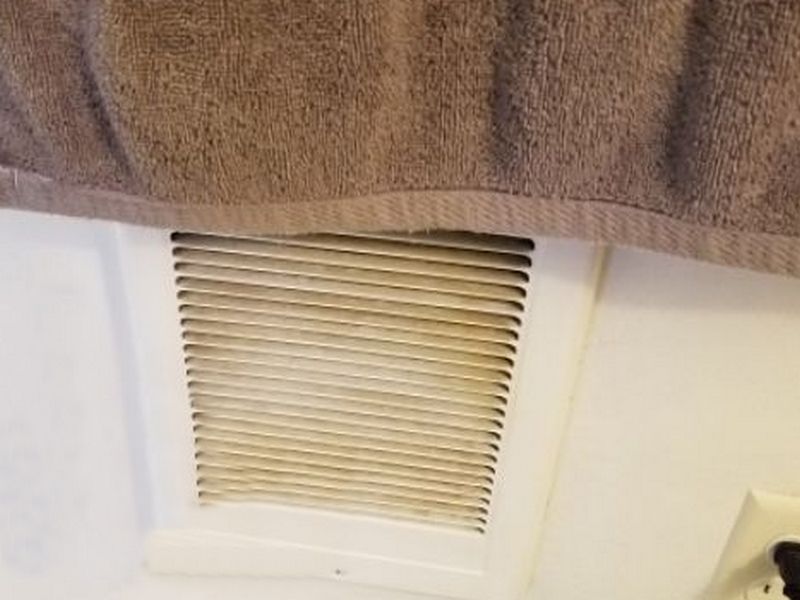All habitable spaces in a dwelling are required to have heat. We will discuss what a “habitable space” is and how we can get the heat there in the Distribution section. There are many ways to provide a home with heat, and different regions and climates tend to favor one type of system over others. Boilers are almost unheard of in the southern tier states. Air-to-air heat pumps are rare in the north, and for good reasons. In this section we will look at the actual heating appliances. The “sub-components”, e.g. pumps, fans, heat exchangers, exhaust systems, will be covered separately.
For ease of discussion, we will divide the heating plants into “central” systems and “space” heaters. Central systems serve multiple areas from a single appliance, and include hot air furnaces, heat pumps, and boilers. So-called “package units” are just combined central heating and cooling units. Space heaters, as the name implies, serve a specific area only, and have multiple units to cover all the rooms. Electric baseboards, radiant panels, ductless mini-split systems, and wall heaters fall into this group. Whole-house in-floor radiant heating and hot water baseboards served by a boiler will be discussed as a “distribution” system.
Central Heating Systems
This section covers “hot air” central furnaces. These include fossil fuel and electric coil appliances. Natural gas, propane/LP, and oil-fired units can be found as older standard efficiency, mid-efficiency induced draft, and high efficiency models. Package units simply combine a furnace with an AC unit and circulator fan into an single exterior “package”, installing only the distribution ducts inside. You should always operate a furnace if there are no safety concerns and the utilities are on.
Start your inspection with a correct identification of the appliance type. It’s essential to be able to tell the difference between a mid and high efficiency furnace. You do not want to tell your client they have a heat pump when, in reality, they have an electric furnace. Ensure there’s proper safety and working clearances at the appliance, and that a shut-off switch is nearby. Inspect for dirt build-up, signs of fuel leaks, or scorching. Observe the flames: they should be controlled and without excessive yellow areas. When the circulator fan engages there shouldn’t be a flame diversion that could indicate a cracked heat exchanger. Be alert to any combustion odors or burning smells. Confirm that you have hot air delivery.
Low-Efficiency Natural Draft Furnaces: These early forced air units have a low flow of combustion air through the heat exchanger, and an AFUE rating between 56% and mid-70%. Gas furnaces generally have standing pilot lights and large exhaust flue pipes. Low-efficiency oil-fired appliances are still common.
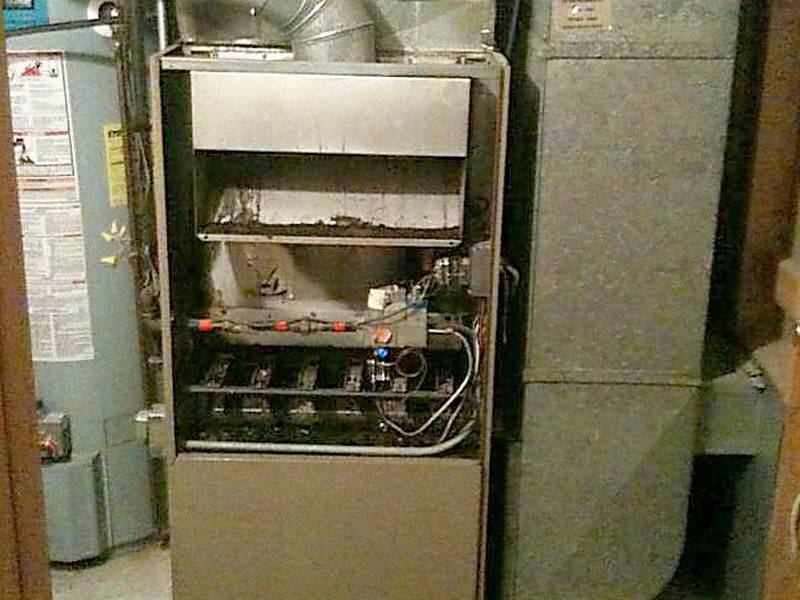
Mid-Efficiency Induced Draft Furnaces: These furnaces are newer, smaller, and gas models have electronic pilot ignitions and narrower flue pipes. They use a fan, seen at the center-left, to draw the combustion gasses through the heat exchanger. This increases the AFUE ratings to the mid-80%. Oil furnaces may have draft inducer fans, including as an after-market addition.
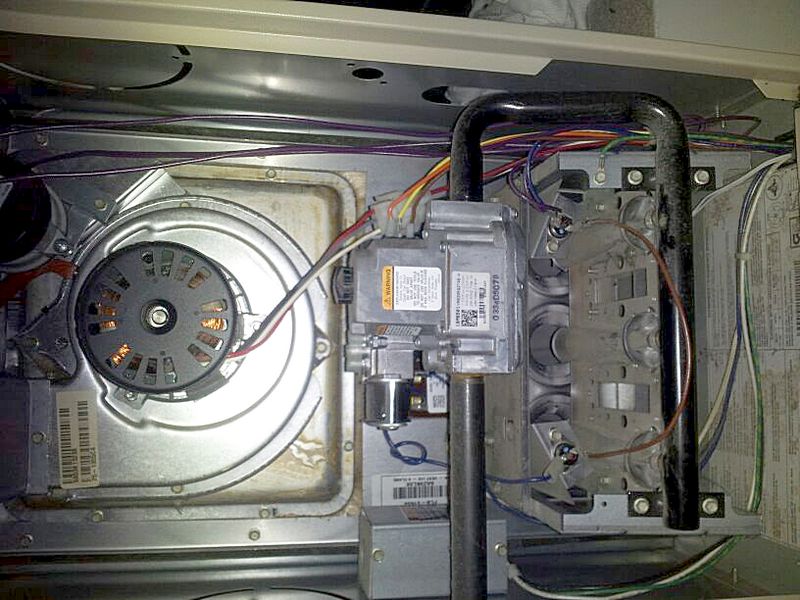
High-Efficiency Condensing Furnaces: These use a secondary heat exchanger to achieve AFUE ratings in the 90%+ range. The exhaust gas is cool enough to condense. That, combined with the positive exhaust flue pressure, makes these Category IV appliances. They must have airtight flues, usually PVC, which is their most recognizable feature. The combustion chamber is usually sealed. High-efficiency oil furnaces are somewhat rare, but are entering the market more.
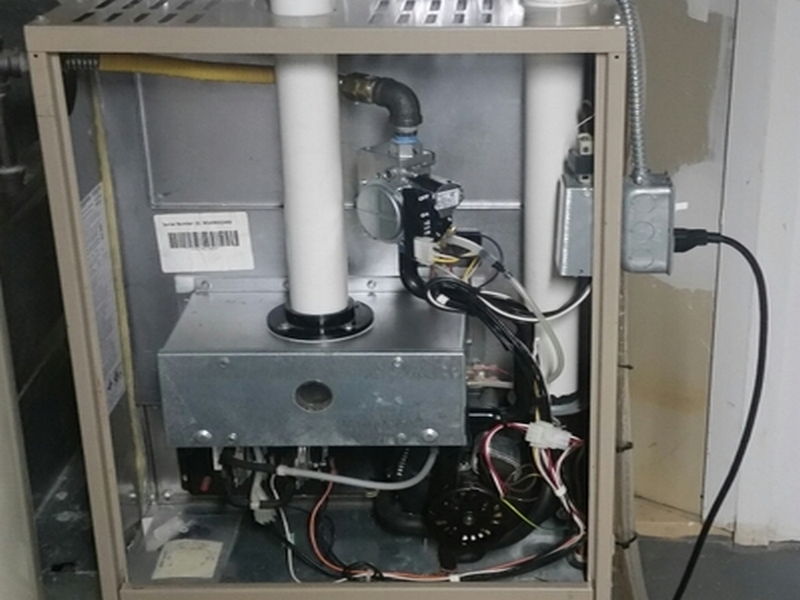
Electric Furnaces: These are basically air handlers with heating elements like a heat pump’s auxiliary coils. ID is easy if no AC is installed: 240 volt power comes in, but no other fuel and no exhaust. If AC is present, check the compressor for a reversing valve and the thermostat for an “Aux Heat” setting to rule out a heat pump. These units are nearly 100% efficient; the operating cost is in the electricity.
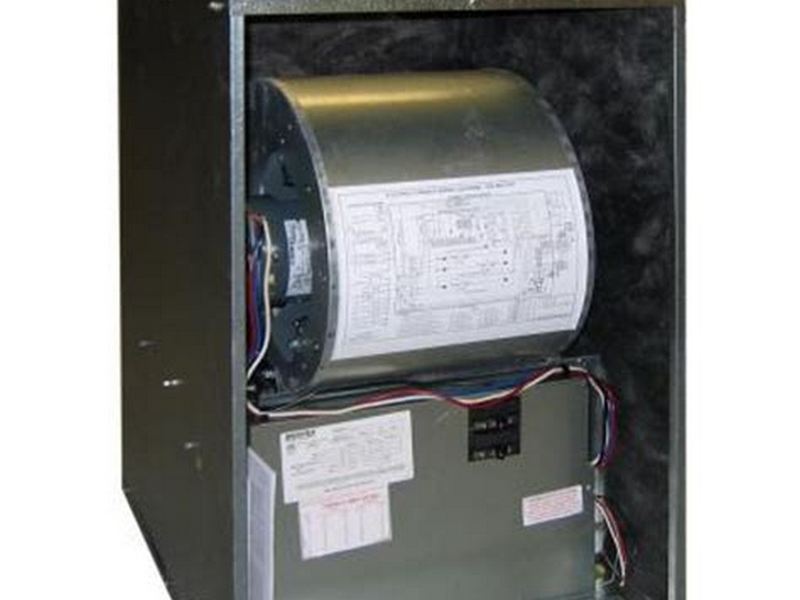
Package Unit: These systems combine a heating and air conditioning system, and the circulator fan, into a single “package”. They are located at the exterior, either as shown or on the roof. Only the ducts are inside the house. The heat can be provided by a furnace or heat pump.

The heating system is very dirty. This can affect efficiency and is a safety hazard. Hire an HVAC contractor to clean the system.
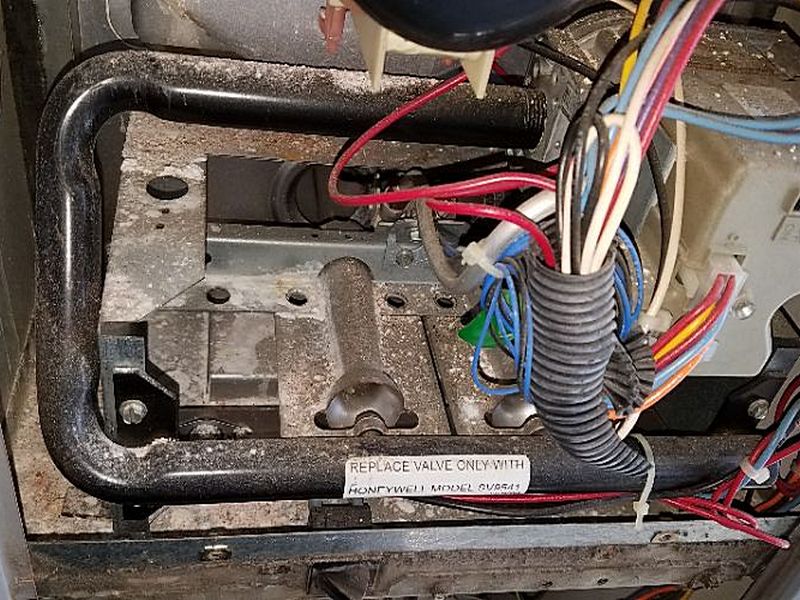
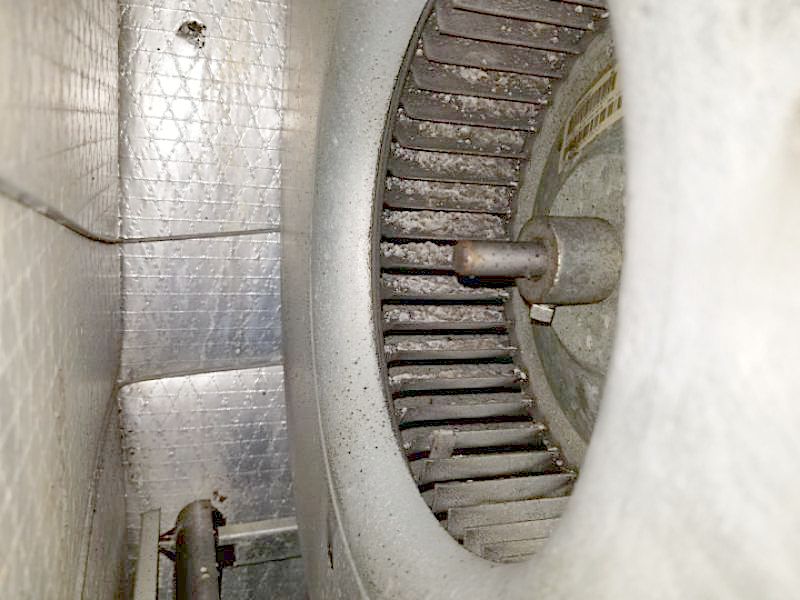
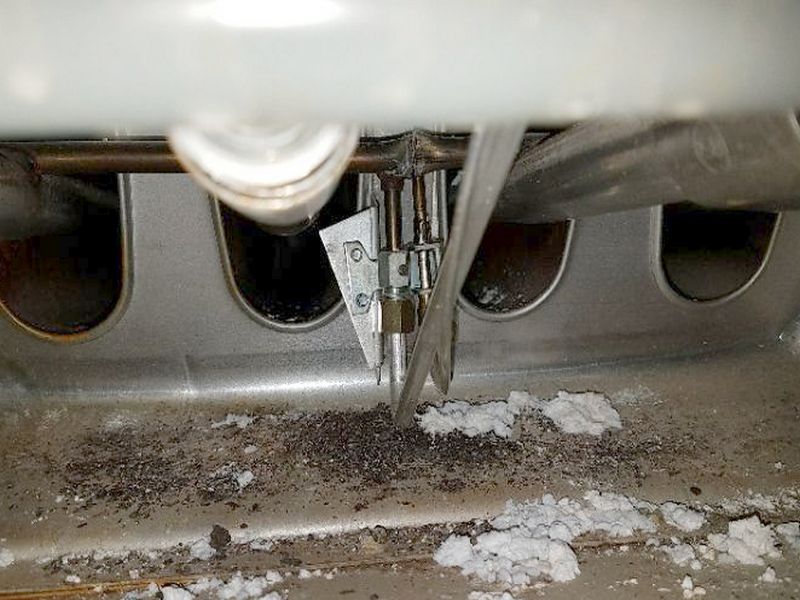
There is excessive corrosion on the heating system. This is a safety hazard. The cause of the corrosion and the extent of the condition should be determined. Hire an HVAC contractor to evaluate the system and to make required repairs.
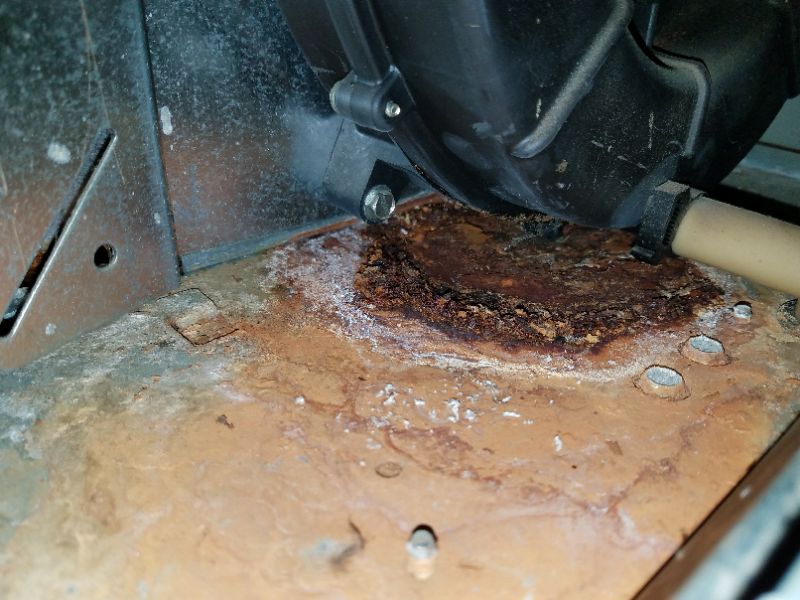
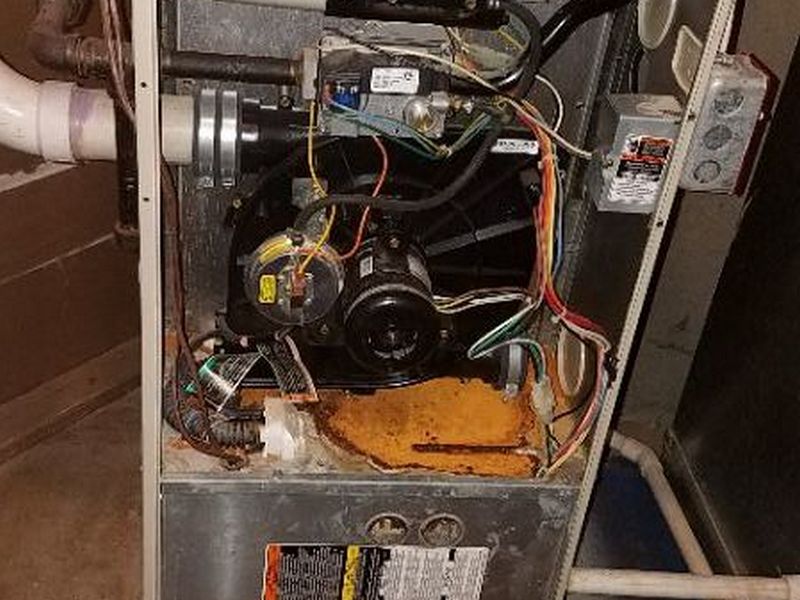
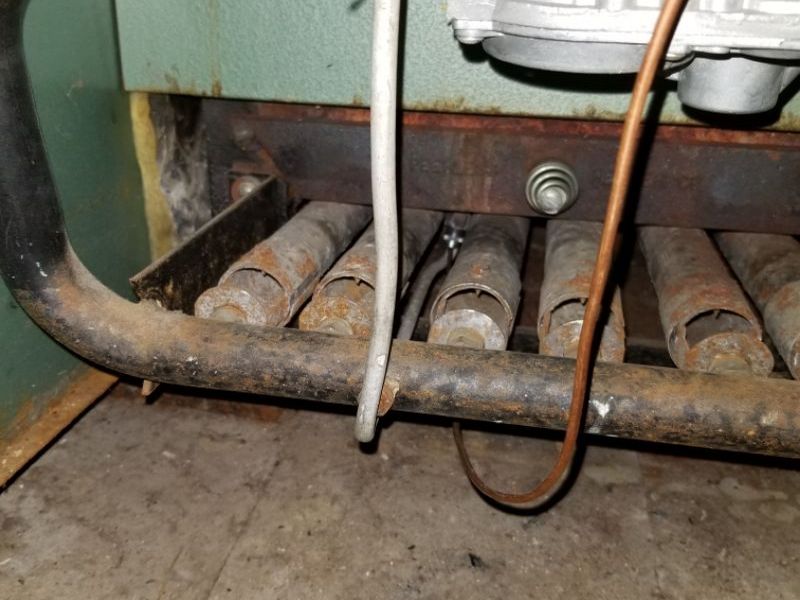
There is evidence of inadequate combustion make-up air for the heating system. This is a safety hazard which permits flue gases to enter the home. Hire an HVAC contractor to evaluate the system and to make required repairs.
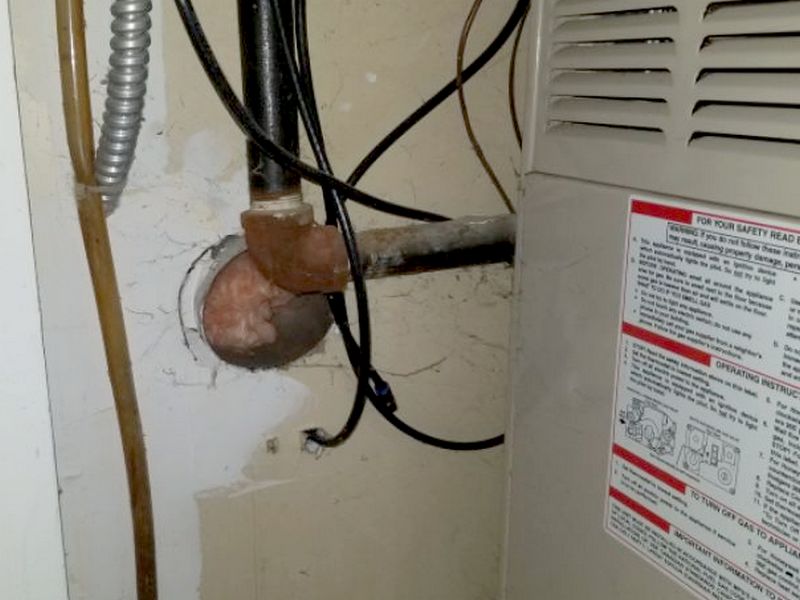
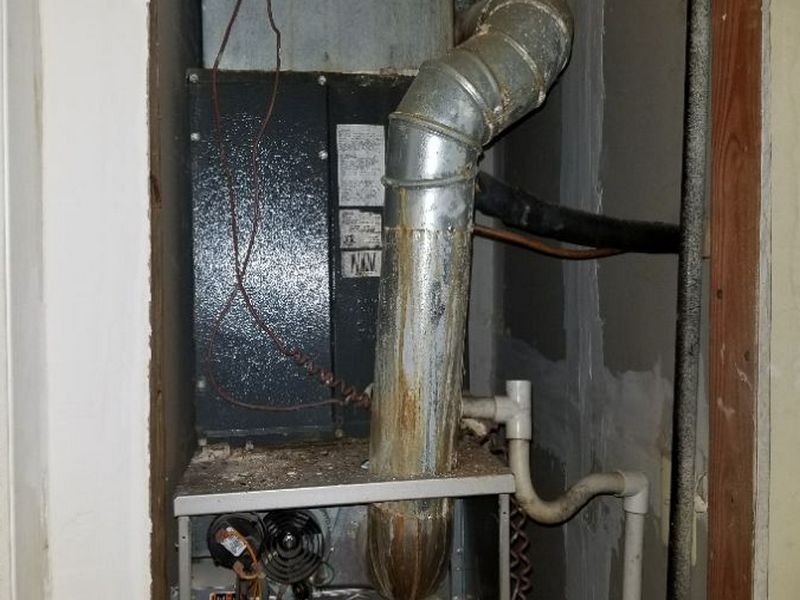
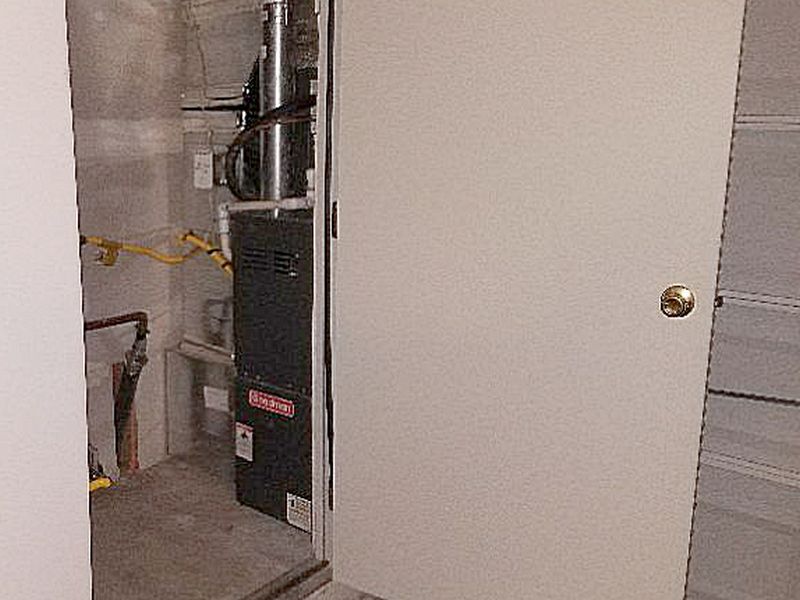
There is evidence of flame rollout at the combustion heating system. This is a safety hazard. Hire an HVAC contractor to evaluate the system and to make required repairs.
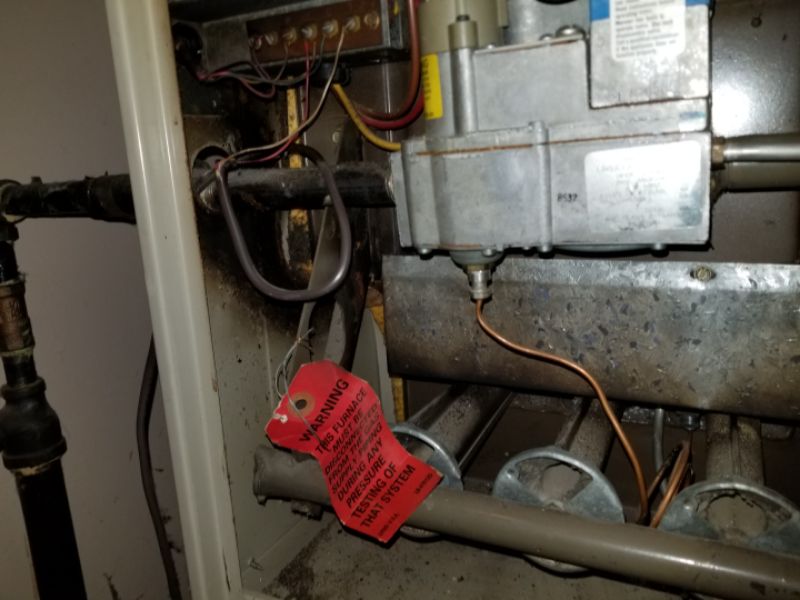
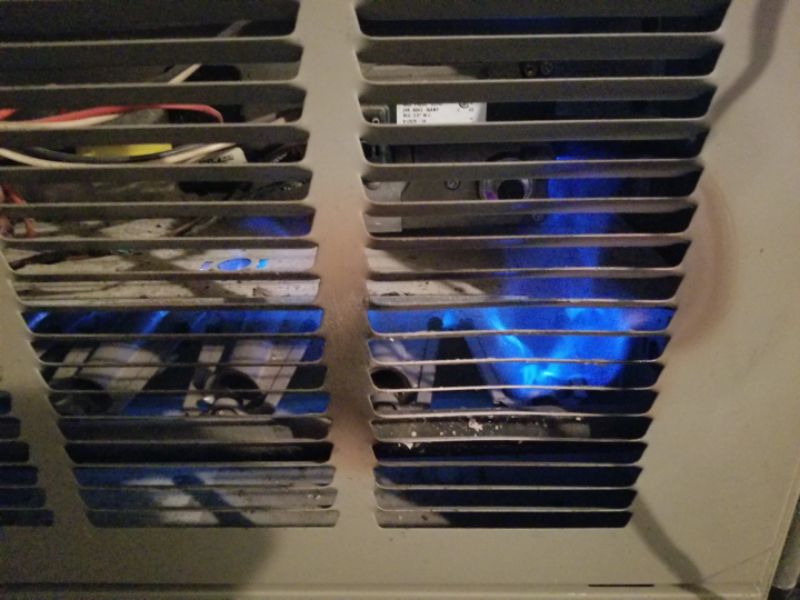
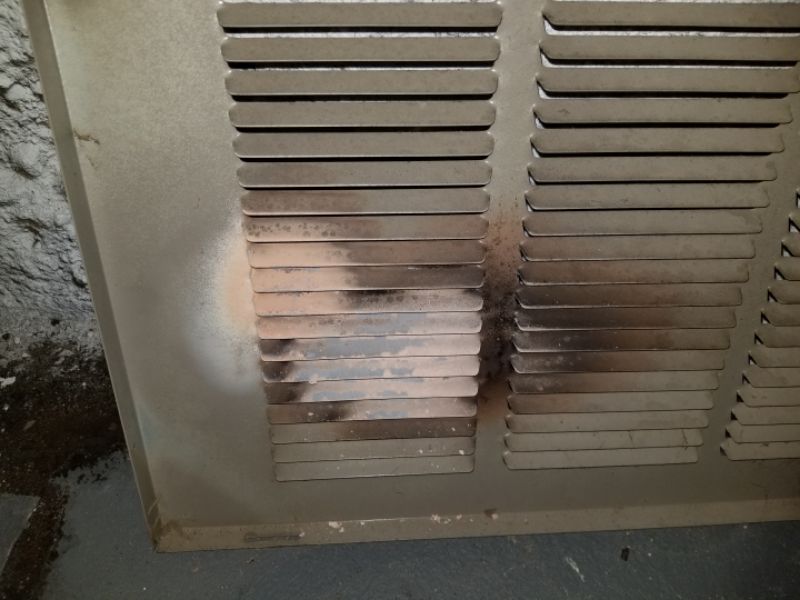
The heating system is improperly located. Safety prohibits installing a combustion appliance that is not closed and direct-vented in a bedroom, bathroom, or a closet in either location. Hire an HVAC contractor to relocate the system.
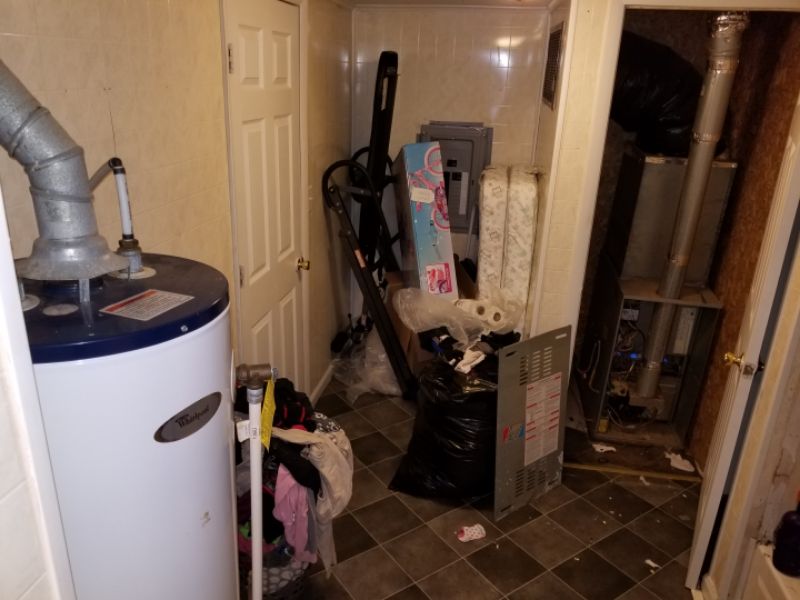
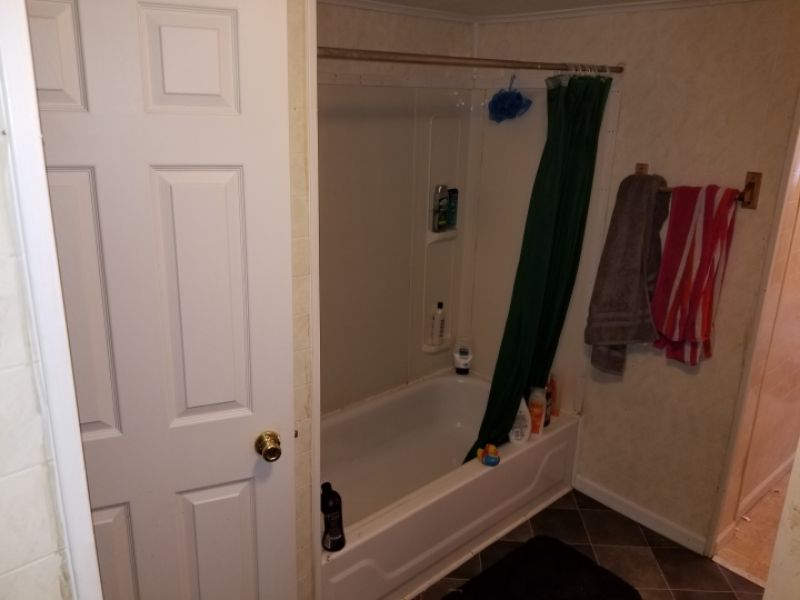
The heating system is too close to the garage floor. Safety standards require that any appliance’s ignition source be at least 18″ above the floor to prevent igniting flammable gases. Hire an HVAC contractor to relocate the system.

There is inadequate clearance at the HVAC equipment. A minimum of 36″ is required in front of the service side of the equipment for safety. Remove the obstructions.



Heat pumps are basically air conditioning systems that can “run backwards” in the Winter. In the Summer, a heat pump operates as an AC system. Refrigerant gases are manipulated to produce very cold coils in the air handler. The warm, moist house air is drawn across these coils to shed its heat and humidity. In the Winter a reversing valve in the exterior unit changes the flow of the refrigerant. Now, the air handler’s coils are very warm. That heat is given off into the supply air. This works because there’s always heat in the outside air to extract, and most units are “air-to-air” heat pumps. However, when it get below about 40° F, there’s not enough heat outdoors to keep up to the demand indoors. This is why heat pumps have “auxiliary” heat sources. It’s also why air-to-air models aren’t used in northern climates. Geothermal. or “ground source” heat pumps use the constant 50-55° F ground temperature below the frost line to gain heat, and are very efficient all year.
Running the compressor is the main test for a heat pump. To avoid damage, you run the system in “Heat” below 65° F, and in “Cool” above 65° F. Compressor-only operation should provide a Delta-T between 14-22° F. Always test any auxiliary heat. Use the data plates to confirm that the interior unit’s capacity is equal to or slightly larger than the exterior’s, never less.
The temperature differential is too low at the heat pump. This “Delta-T” is the temperature difference between the supply and return air. The proper range is 14F – 22F. Hire an HVAC contractor to evaluate the system and to make required repairs.
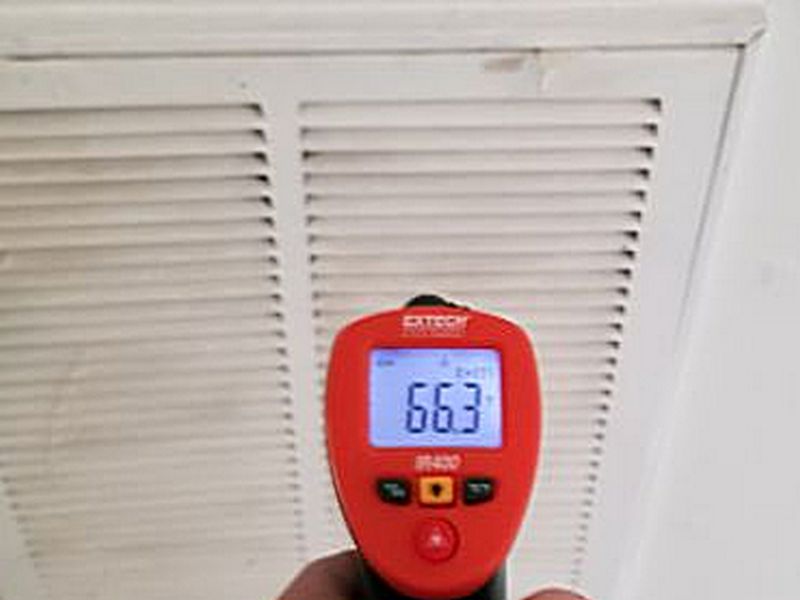
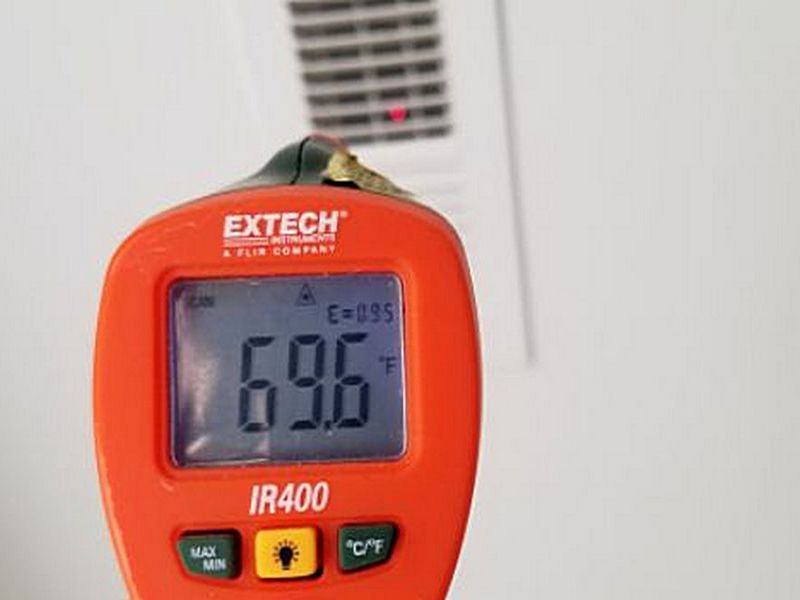
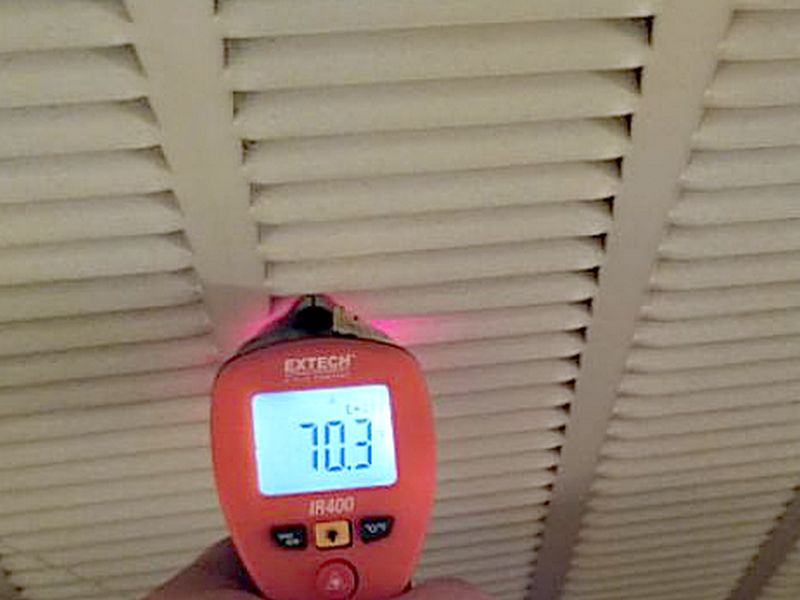
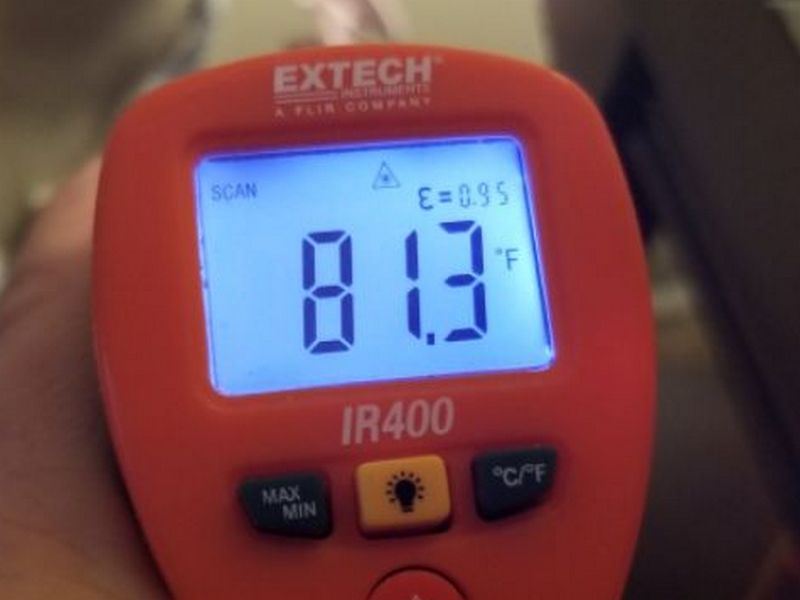
The auxiliary heat is inoperative at the heat pump. This backup system is needed during very cold days or at times of high system demand. Hire an HVAC contractor to evaluate the system and to make required repairs.
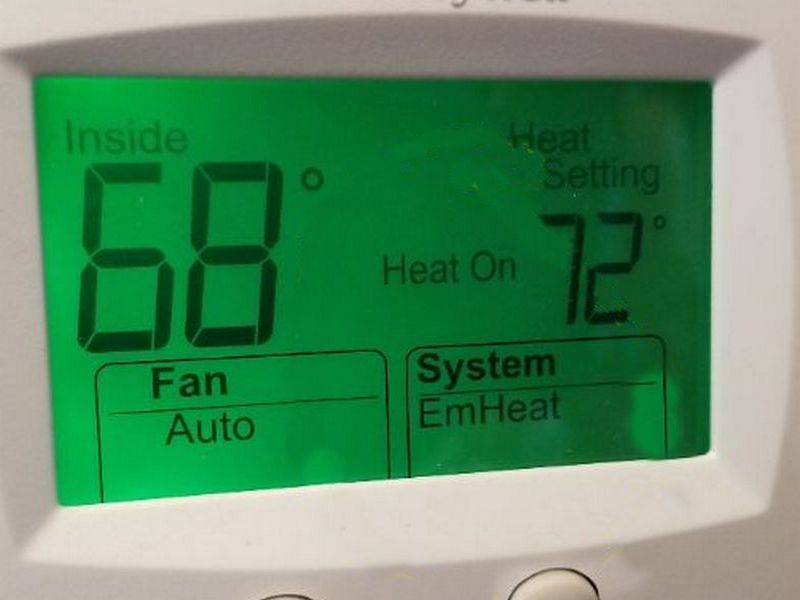
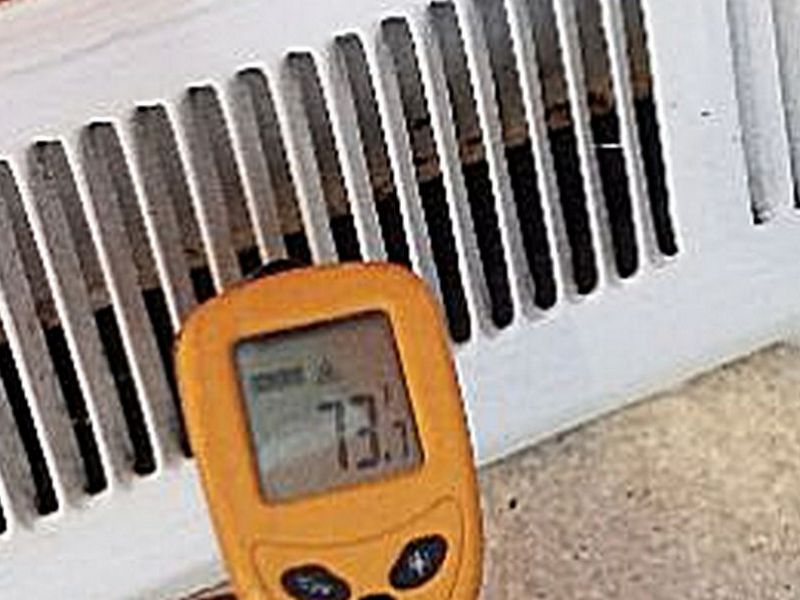
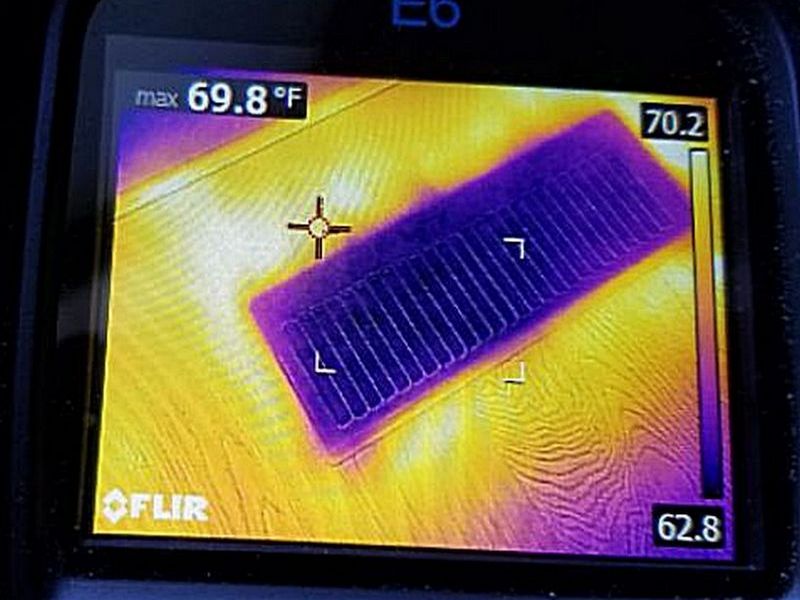
The heat pump’s air handler coils are dirty. This affects efficiency and air quality. Hire an HVAC technician to clean and service the system.
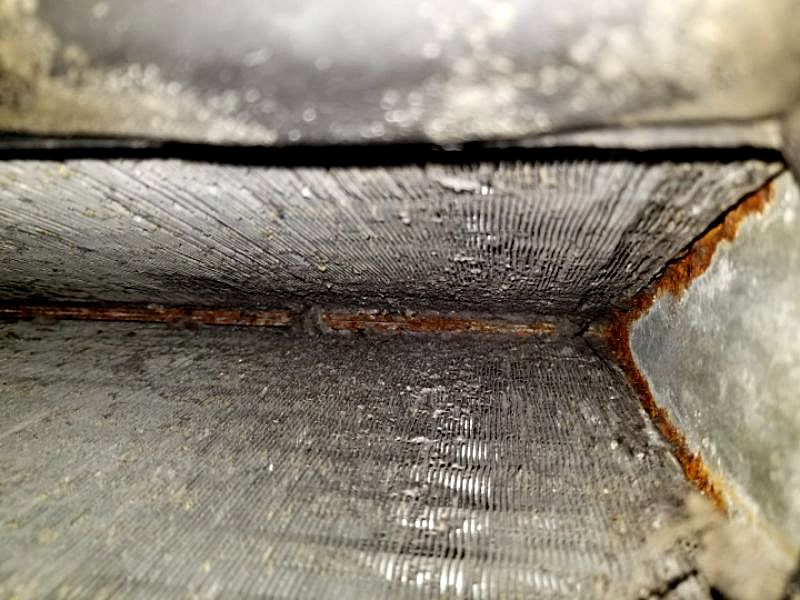
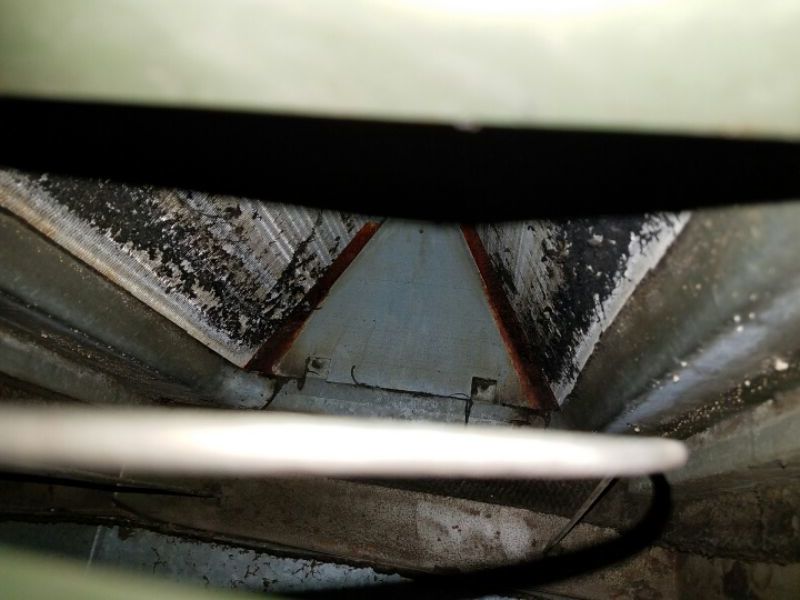
The dual fuel heating system is operating improperly. The heat pump compressor is running at the same time as the auxiliary combustion furnace. This will damage the system. Hire an HVAC contractor to evaluate the system and to make required repairs.
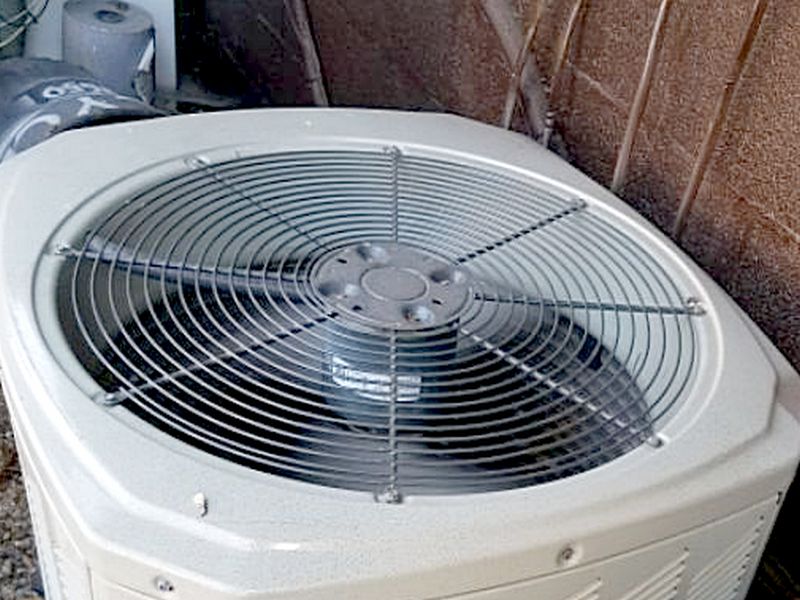
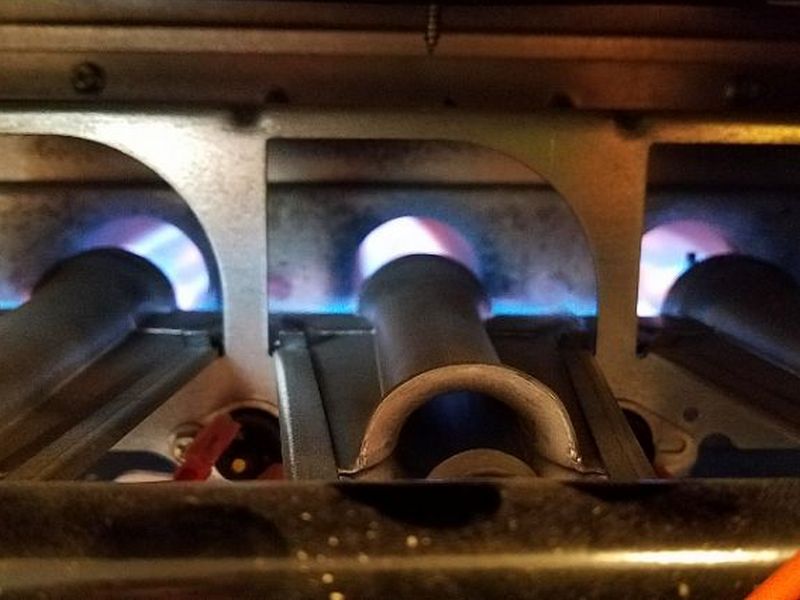
There is an improper match between the heat pump’s interior and exterior components. The interior’s capacity should match or be 1/2 to 1 ton larger than the exterior. Hire an HVAC contractor to evaluate the system and to make required repairs.
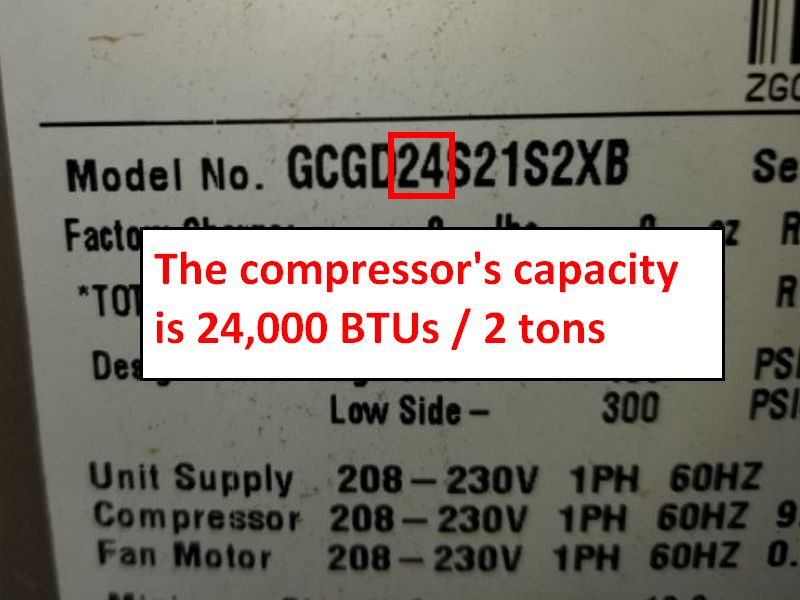
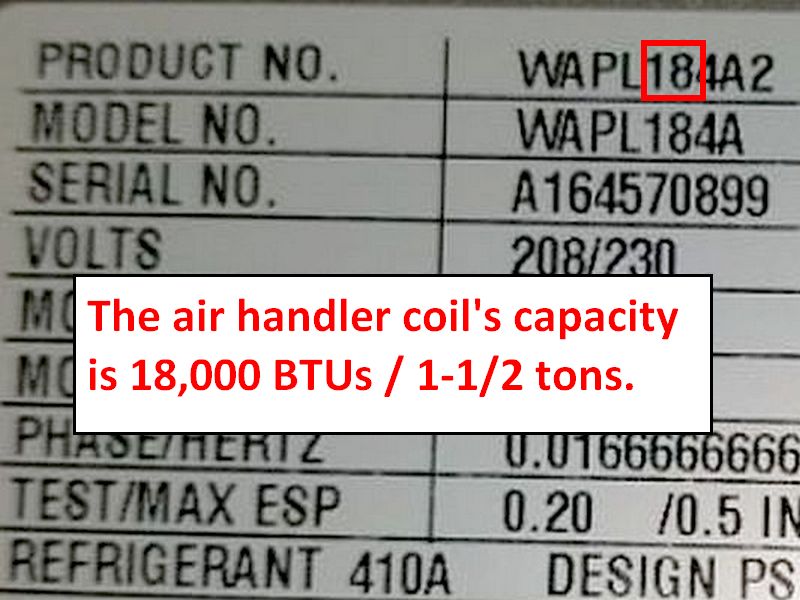
The insulation is damaged or missing at the heat pump’s suction line. This affects the system’s efficiency. Install an exterior-grade pipe insulation on the suction line.
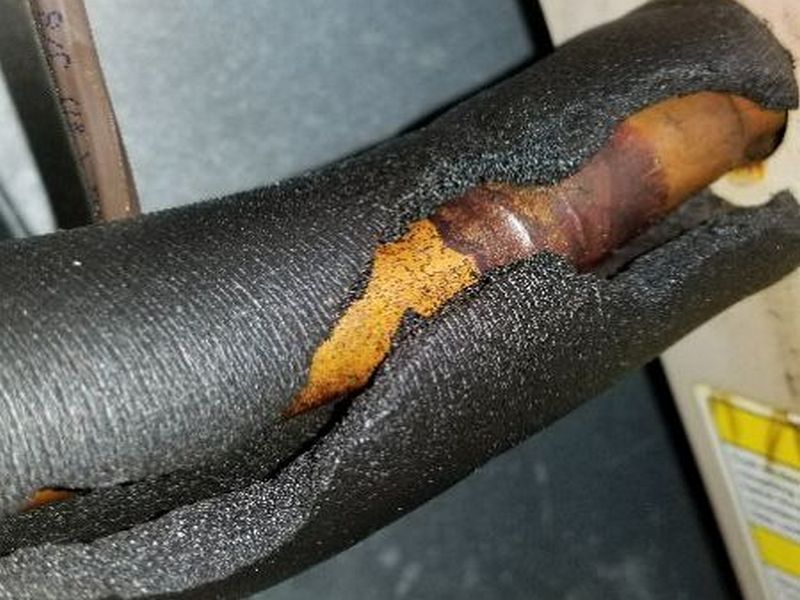
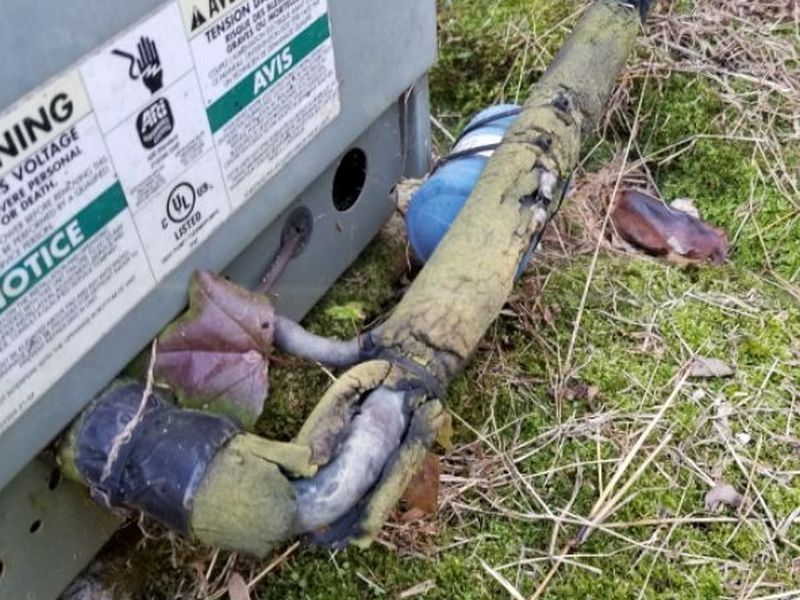
Boilers are water heating appliances. Hydronic boilers distribute water below the boiling point using radiators, baseboards, and radiant tubing. Steam boilers heat water to create steam, which is distributed through radiators. Hydronic forced-air systems, e.g. Apollo and Aqua Therm, are hybrids that use a high-BTU capacity water heater as a boiler. The hot water runs through a coil in an air handler to heat the house air. Traditionally, boilers have been large, free-standing fossil fuel appliances. On-demand “tankless” models, including electric units, are becoming more common.
Always ensure that the home’s water supply is on, and that the boiler’s pressure gauge indicates water in the system. Operating an empty boiler can cause permanent damage. By the same token, the pressure should not be too high; <30 psi for a multi-story hydronic system and <5 psi for a steam system. The pressure should be checked during operation to confirm there’s not a dangerous rise. An expansion tank should be present, as should a pressure relief valve. Neither should leak. Backflow preventers must be installed to prevent contaminating the potable water supply with system water. Inspect for damage, deterioration, signs of leakage, flame rollout, and combustion odors.
Old Boilers: Boilers have an EUL of 30-50 years. It’s not unusual to inspect a “working antique.” In reality, the only thing that absolutely condemns a boiler to the scrap heap is a heat exchanger leak. Until then, you can replace pumps, burners, valves, etc. While they will certainly be fuel hogs, they can heat the home. Be sure to use the appropriate EUL Information Statement.
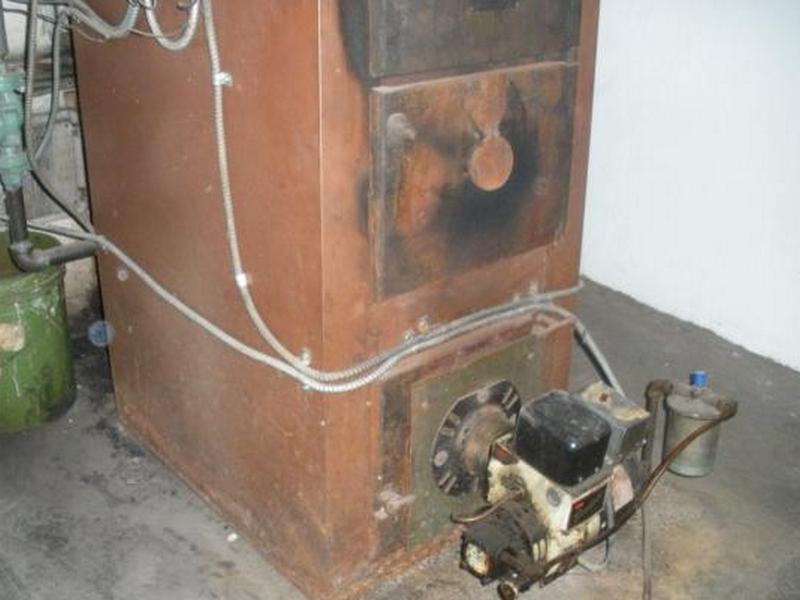
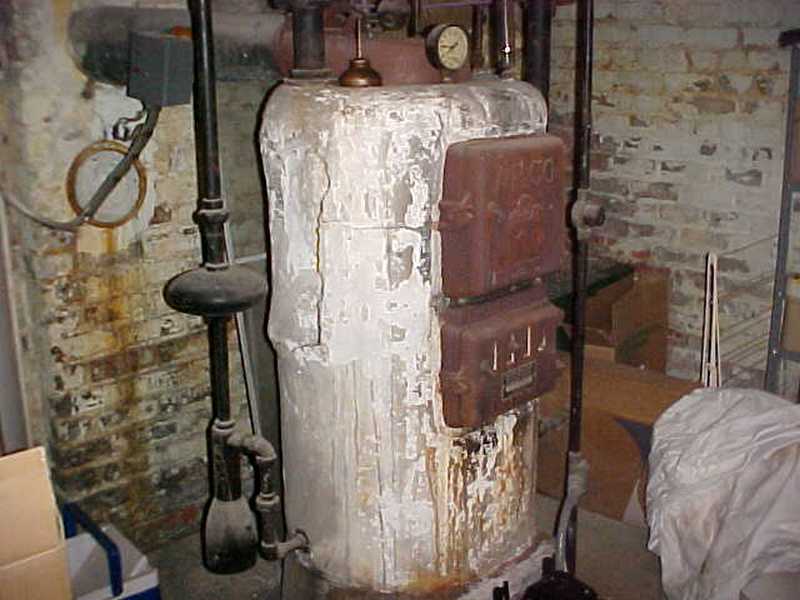
Modern Natural Draft Hydronic Boilers: These heating plants generally have an AFUE rating in the mid 80%. They can be vented into masonry chimneys. Most gas units have cast iron heat exchangers. Many newer oil boilers use sealed “Tiger Loop” oil delivery systems, which improves combustion.
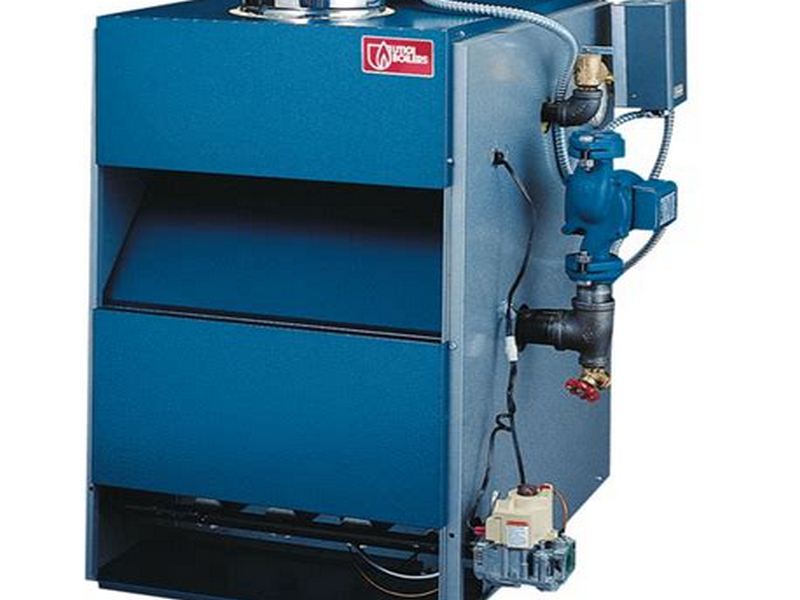

Steam Boilers: These can be gas or oil fueled, and are much less common than hydronic models. They are most quickly identified by the vertical sight glass, seen at the left side of the photo. Steam systems are specialized. If they are used in your area you should obtain additional education as available.
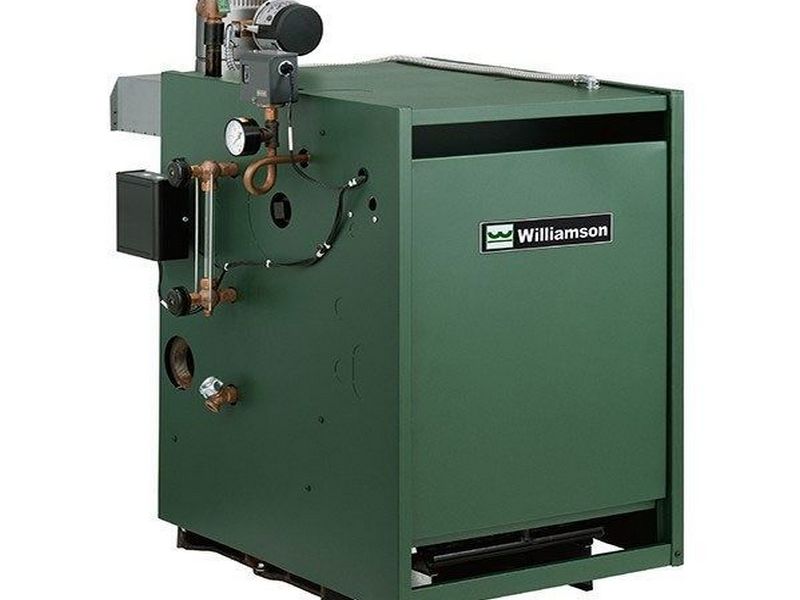
High-Efficiency Condensing Boilers: These AFUE 90%+ appliances can be wall mounted or free-standing. They have sealed vents, either PVC or Category IV stainless steel, and cannot exhaust into a masonry flue. The masonry flue may be used as a chase for a vent that extends to the exterior. They generally require maintenance every other year to comply with their warranty.
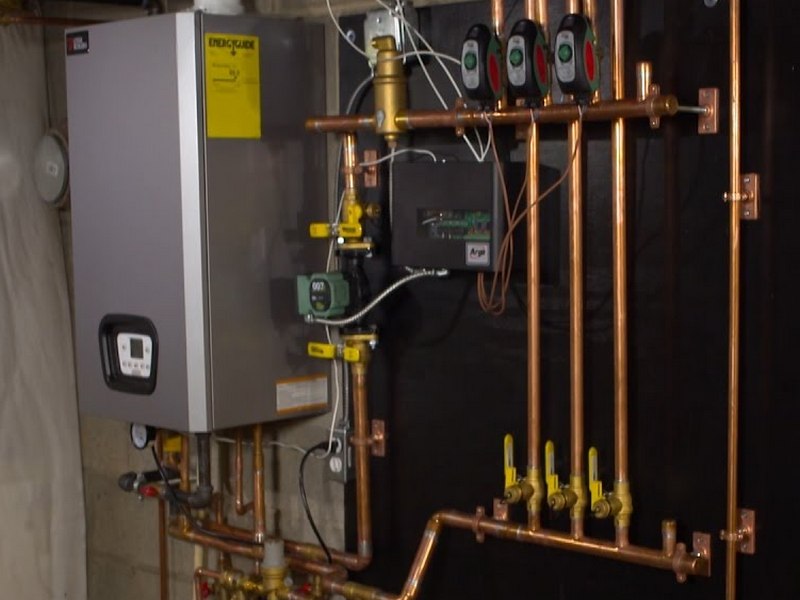
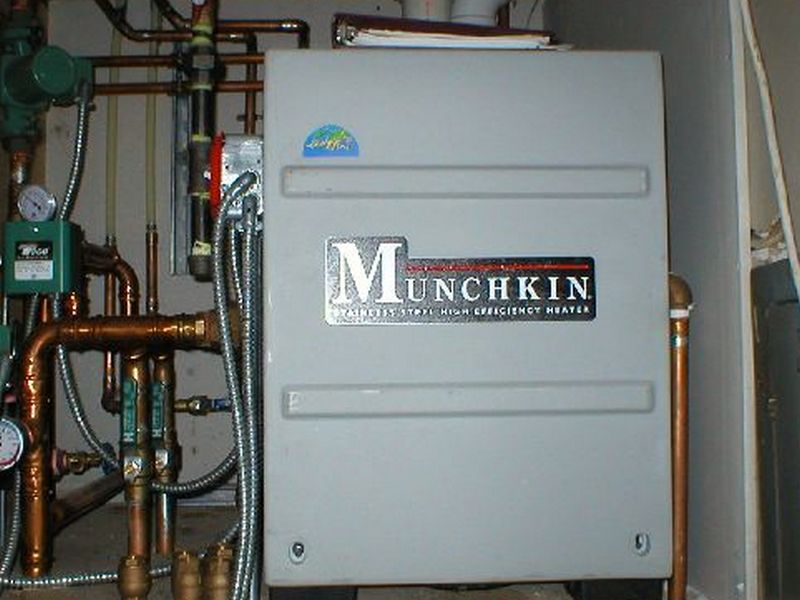
The boiler cabinet is deteriorated. This indicates possible leakage. Hire an HVAC contractor to evaluate the system and to make required repairs.
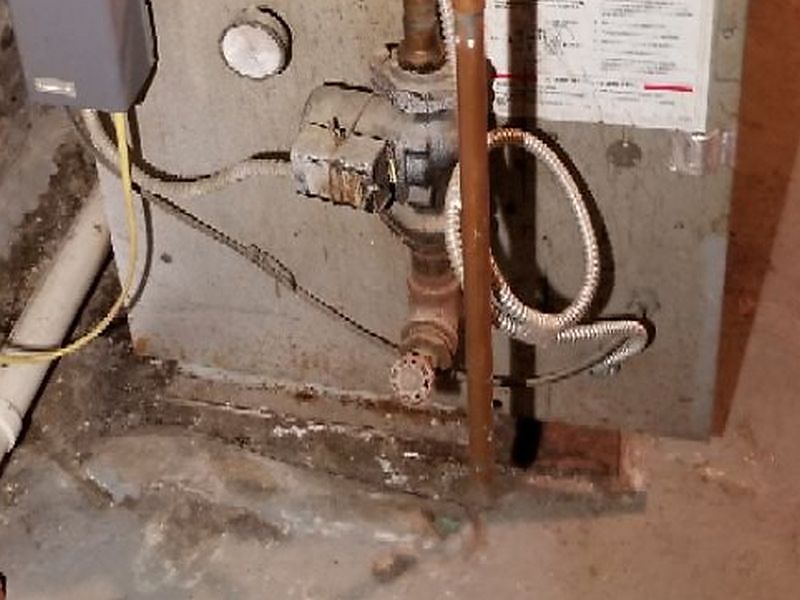
The boiler is leaking. This is potentially hazardous, and may require replacement. Hire an HVAC contractor to evaluate the system and to make required repairs.
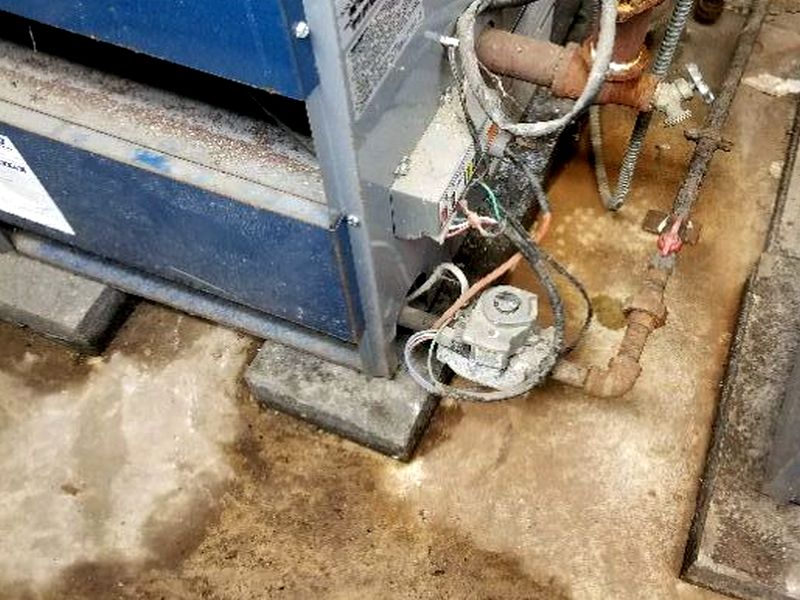
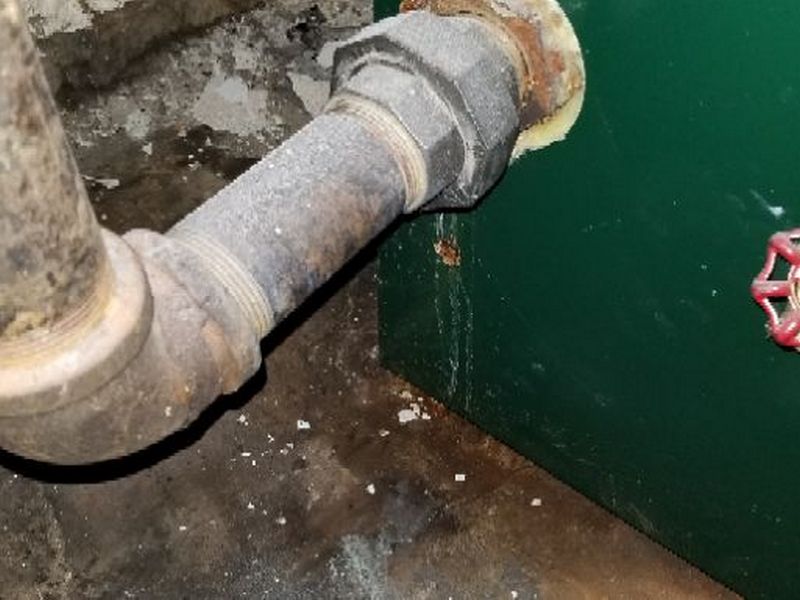
The boiler’s water pressure is too high. This will damage the system and is a potential safety hazard. Hire an HVAC contractor to evaluate the system and to make required repairs.
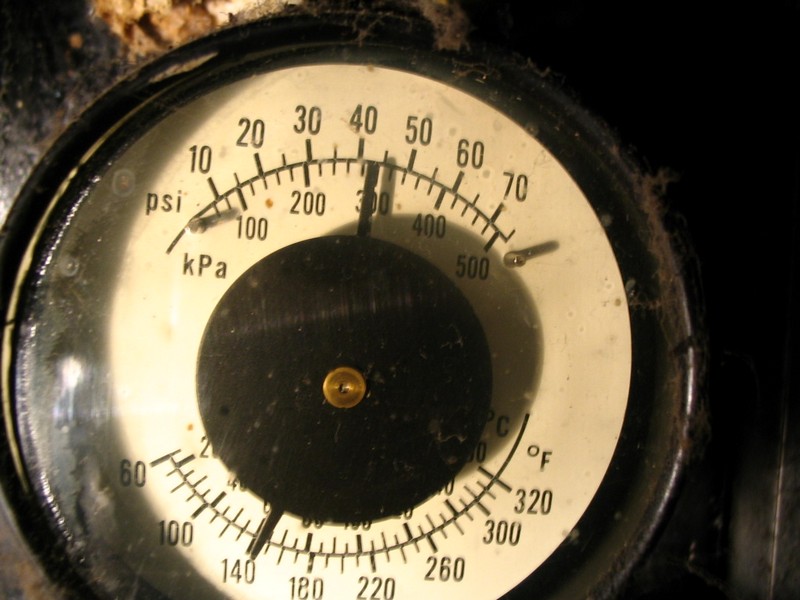
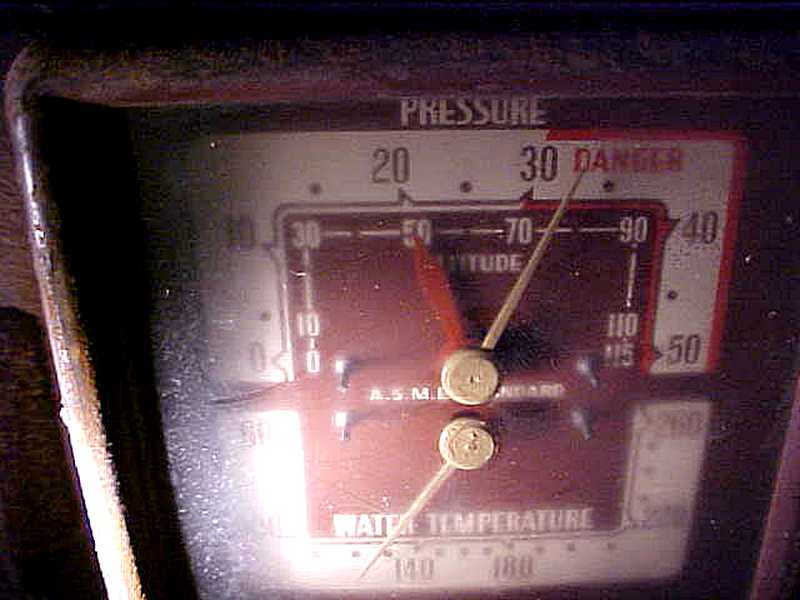
The boiler does not have a backflow preventer installed in the water supply. This permits contaminated system water to enter the house’s potable (drinking) water supply. Hire an HVAC contractor to evaluate the system and to make required repairs.
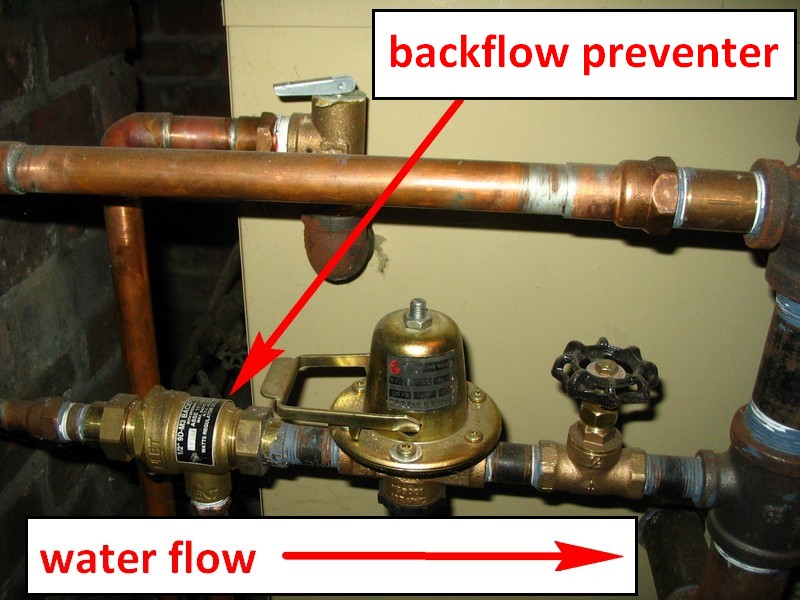
The boiler’s backflow preventer is improperly installed. It must have full “street” pressure (before the pressure reduction valve) to prevent contamination in the house’s potable water supply. Hire an HVAC contractor to evaluate the system and to make required repairs.
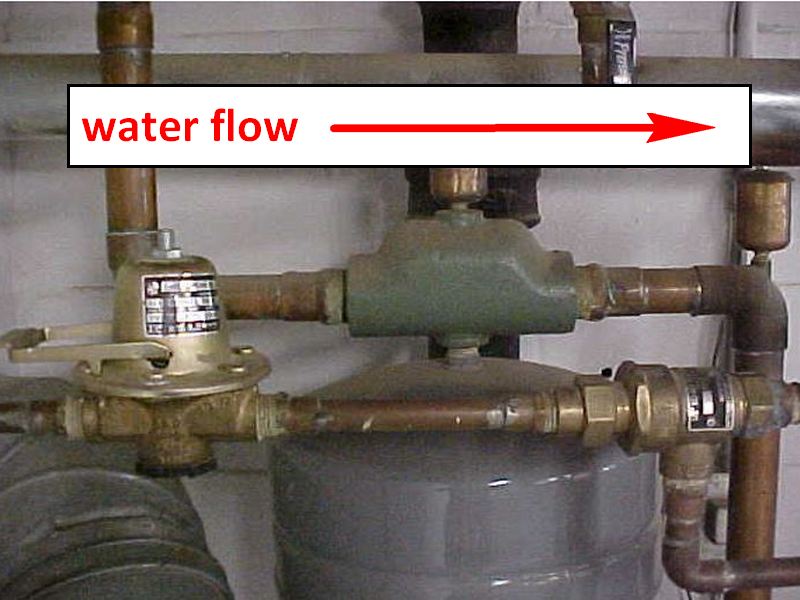
The pressure relief valve discharge pipe is missing. This pipe is required to direct high temperature steam and water toward the floor if the valve opens. Hire an HVAC contractor to make the needed repairs.

The pressure relief valve discharge pipe terminates more than 6″ above the floor. It must be within 6″ of the floor to minimize the possibility of a scalding injury if the valve opens. Hire an HVAC contractor to make the needed repairs.


The pressure relief valve is leaking. It may not function as needed for safety. Hire an HVAC contractor to make the needed repairs.
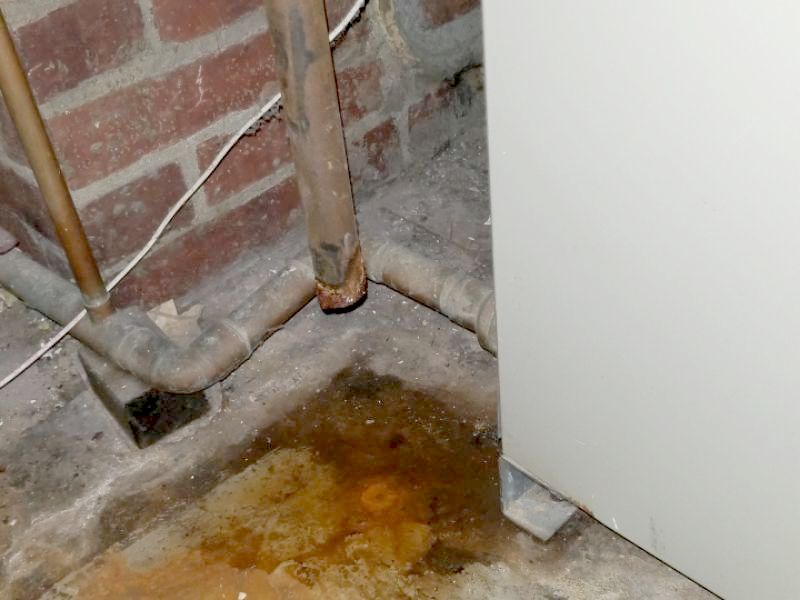
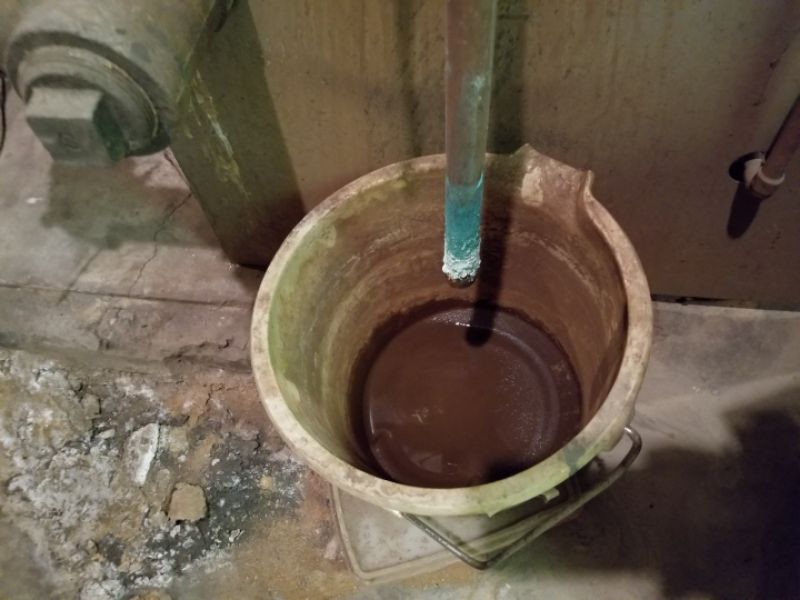
The pressure relief valve discharge pipe is a smaller diameter than the valve’s outlet. This will prevent a proper discharge and is potentially hazardous. Hire an HVAC contractor to make the needed repairs.
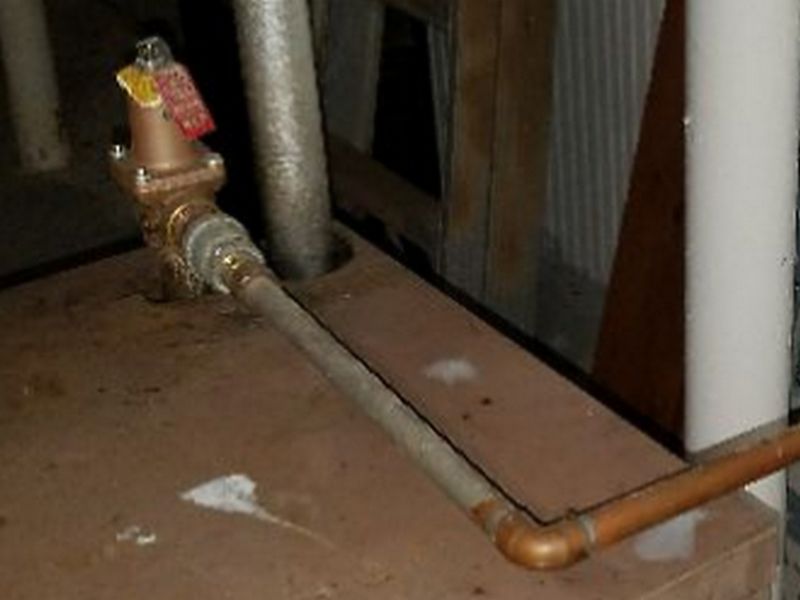
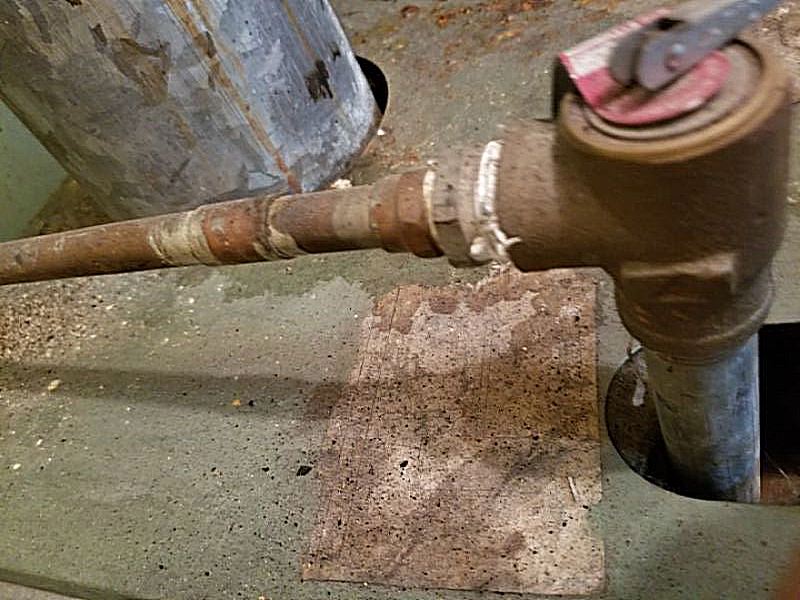
Space Heating Systems
Electric baseboard heaters are probably the most common type of single-zone space heating. They can frequently be found in older homes that were built without air conditioning. When electricity is the only fuel choice, they are being replaced by heat pumps, which use about 50% less energy. The exception is in a few dry areas with a low number of heating days. Baseboards are also a popular solution for additions and small finished areas where providing ducts would be difficult. Most units are 240 volts, but 120 volt models are available. Thermostats are located in each room, either on the wall or the units themselves, for the heaters there and allow great flexibility in zone comfort.
Inspect each zone as you enter the room. Don’t walk away from the area without turning the thermostat back down. Your IR thermometer or camera work very well for confirming operation. Baseboards should be secure to the wall, and have at least 3/4″ clear space above the floor or carpet. This is for safety and to allow proper convection. All covers, including at the thermostat, should be intact and without damage. Receptacles should not be located above electric baseboards to avoid damaging the cords. Curtains should be at least 6″ above the heaters, and furniture at least 4-6″ away. Baseboards should be free of excess dust and debris.
There is a loose baseboard heater. This is a safety hazard with electric resistance units, and a leak risk with hot water systems. Hire an HVAC contractor or electrician to make required repairs.
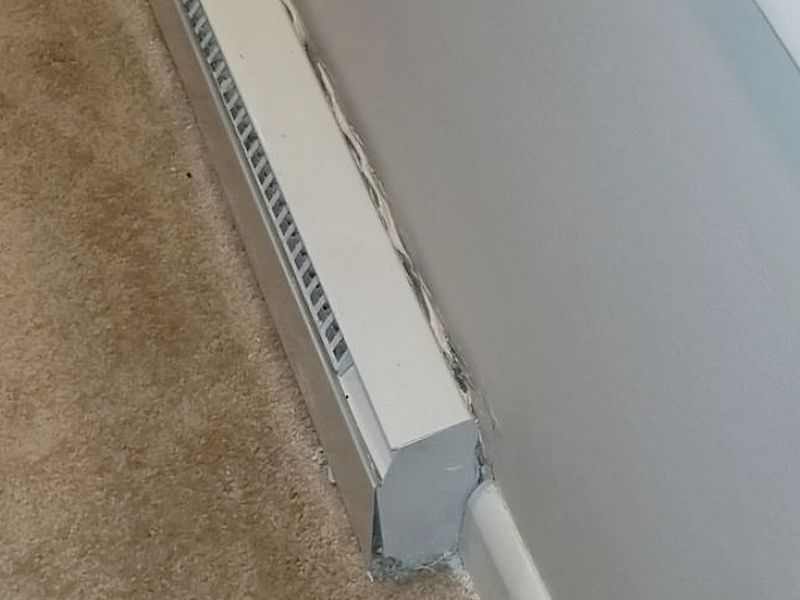
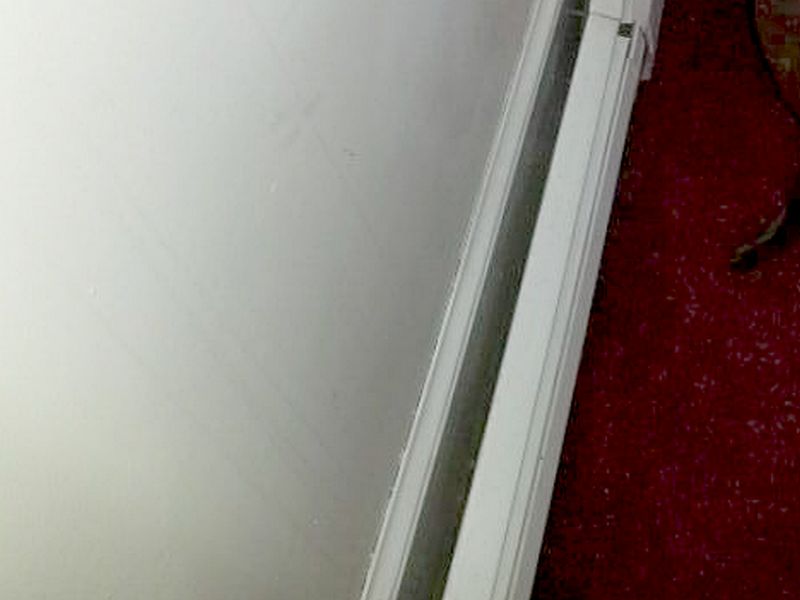
There is an inoperative baseboard heater. The cause for this could not be determined. This affect proper heating in the zone. Hire an HVAC contractor or electrician to make required repairs.
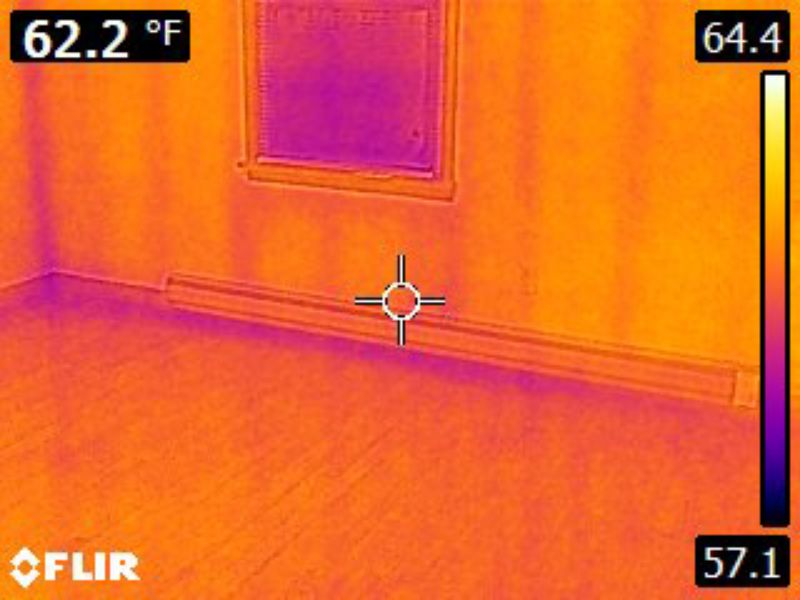
The baseboard heater’s cover is missing. This is a safety hazard. Hire an HVAC contractor or electrician to make required repairs.

The baseboard heater is damaged. This is a safety issue. Hire an HVAC contractor or electrician to make required repairs.
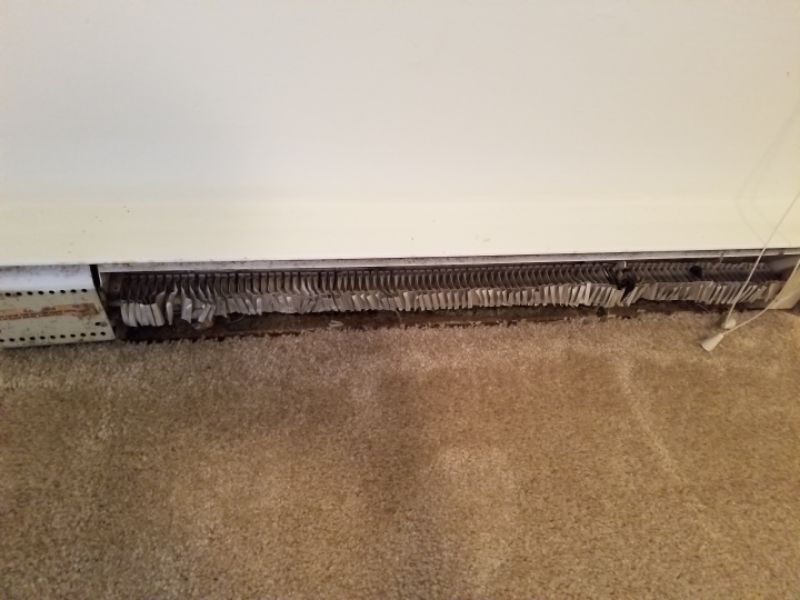
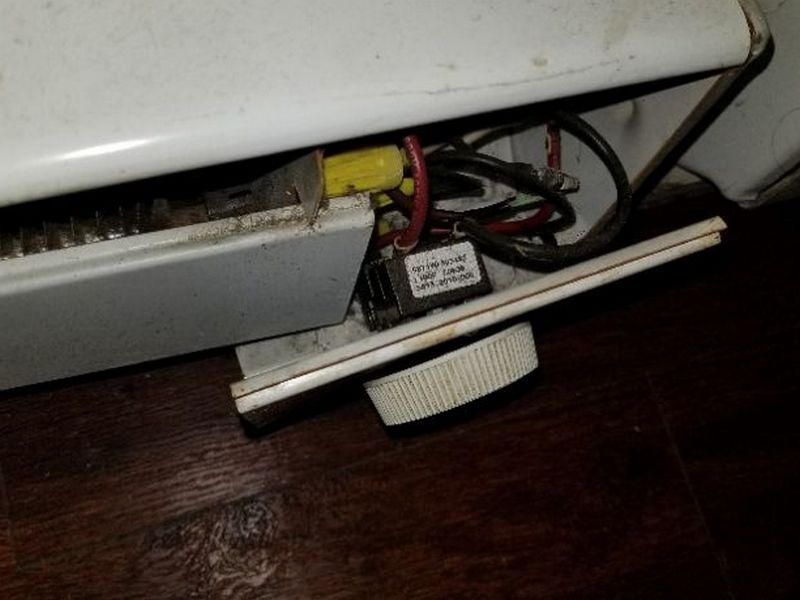
There are electrical receptacles above the electric baseboard heat. This is a safety hazard. Hire an HVAC contractor or electrician to make required repairs.
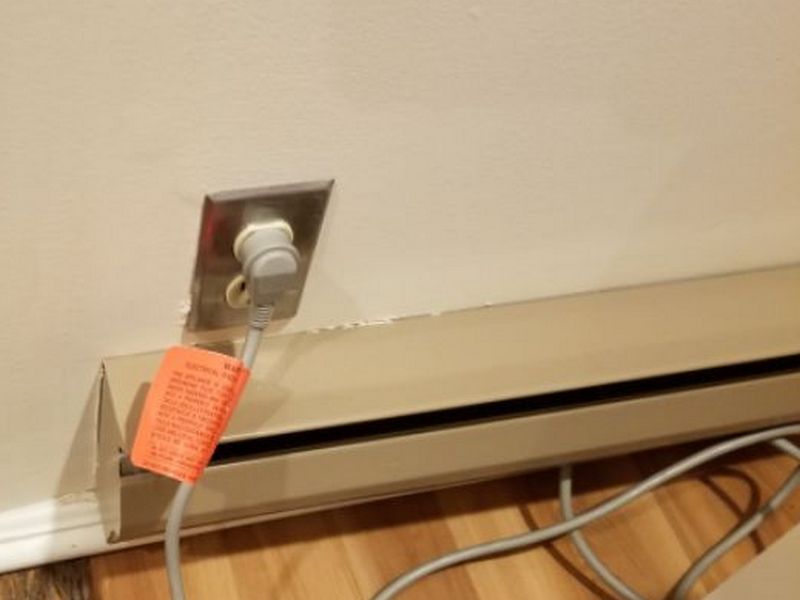
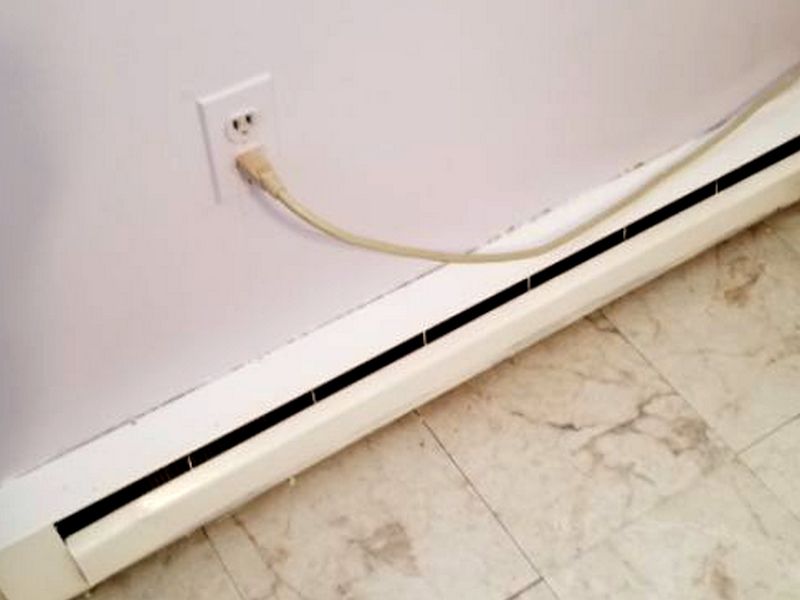
The curtains are too close to the electric baseboard heater. This is a fire hazard. Remove or change to curtains to provide at least 6″ of clearance.
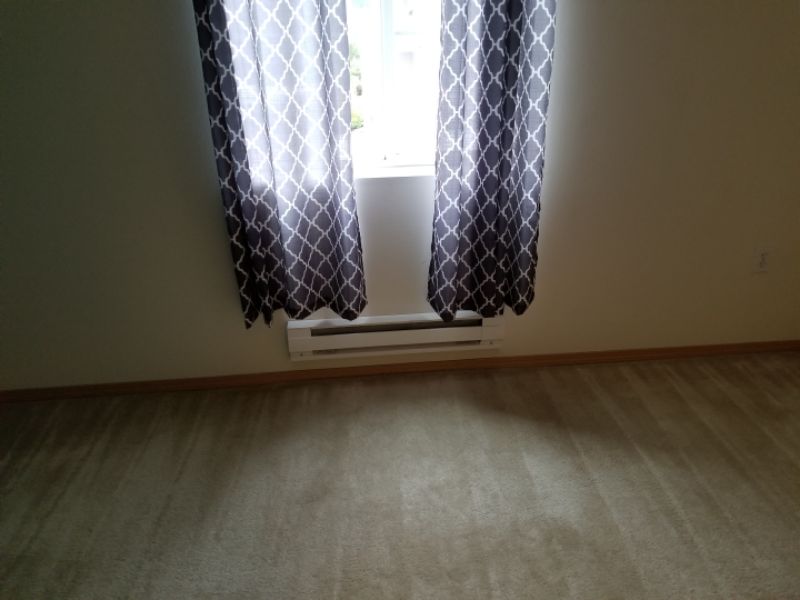
The baseboard heater is installed in an unworkmanlike manner. This is a safety hazard. Hire an HVAC contractor or electrician to make required repairs.
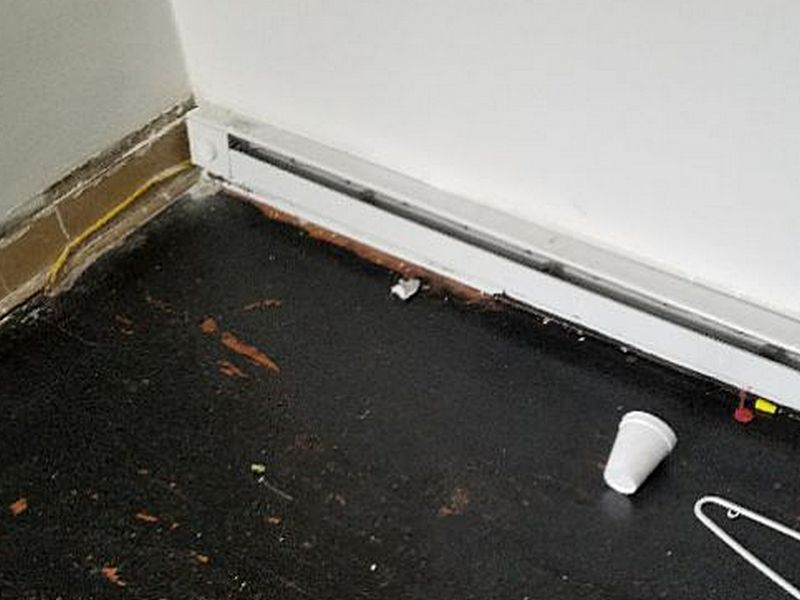
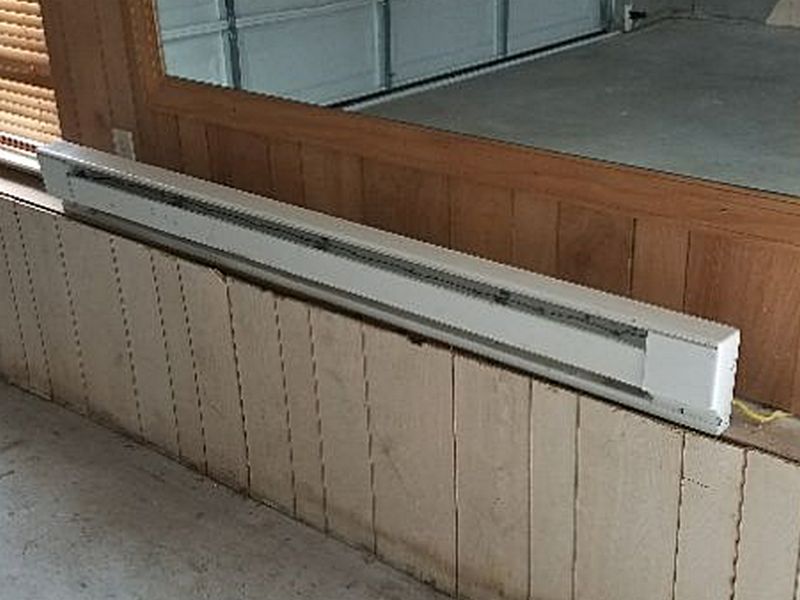
These are heat pumps and air conditioners that, as the name implies, do not have distribution ducts. They are designed to condition a limited zone. The air handler is mounted on the wall of the room being served rather then delivering air from a central location via ducts. Only the refrigerant lineset penetrates the exterior wall, and connects to a small compressor. There are compressor models that can power 2 or 3 air handlers. Mini-Splits are very popular for conditioning additions or renovated spaces where duct work isn’t practical. The air handler units are usually placed high on the wall and are operated by a remote control.
Inspect these systems much the same as you would a heat pump. Always confirm that the heat function comes from the compressor and isn’t just electric strip heat. Obtaining a Delta-T is a bit trickier as the supply and return are both on the wall unit. Labels on the interior portion may be hard to see, but you should attempt to capture the inside and outside data plates and check that the capacities match. Be alert to any signs of condensate leakage, which would likely occur in the wall below the air handler.
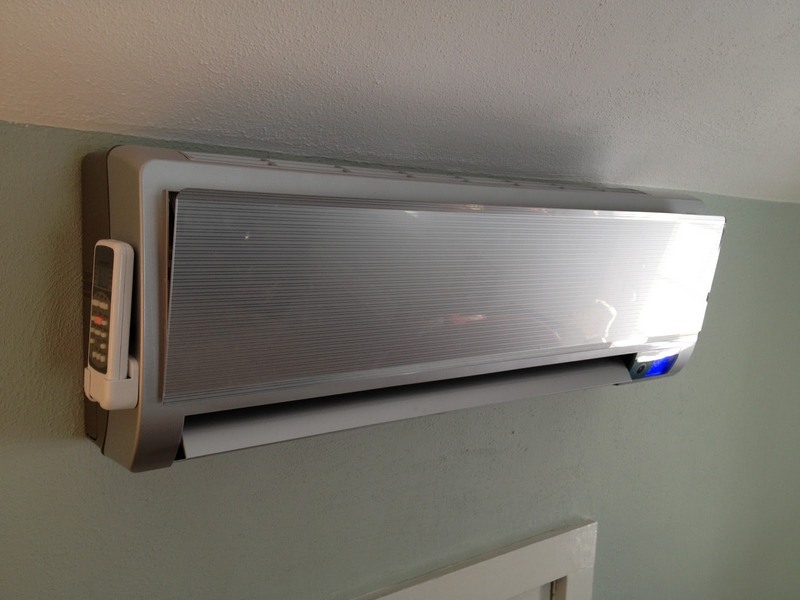
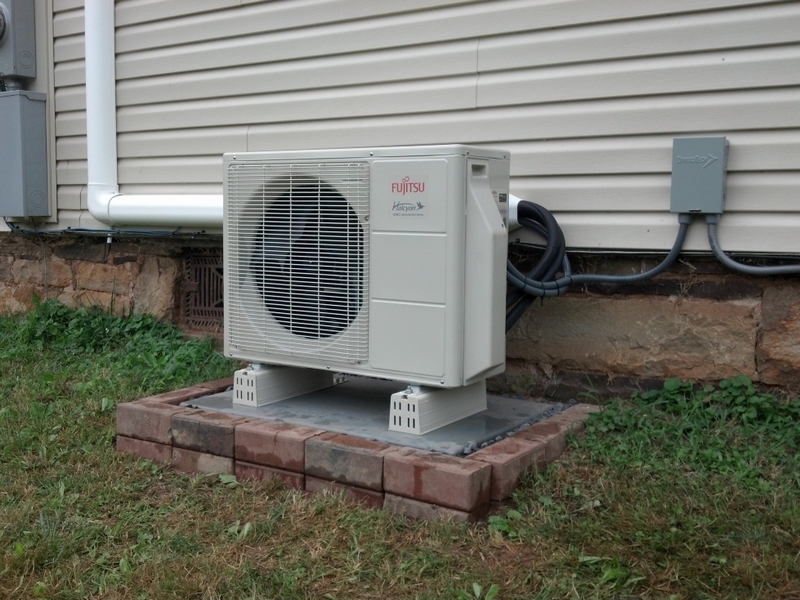
In this section we are covering electric radiant heat: hot water radiant systems in floors is a “Distribution” method for a boiler. Residential radiant ceiling and wall panels are generally, in this country, an older installation. However, they are still available, and in some applications can provide credits towards a LEED Certification. Radiant in-floor heat is becoming increasingly popular, especially in bathroom suites. Electric floor systems are generally low-voltage mats, films, or foils, or high voltage cables. They can be embedded in lightweight gypsum and concrete, sandwiched in a sub floor construction, or installed between the joists below the floor. The joist bays below should be insulated.
Inspecting radiant systems has been greatly simplified by our use of infrared cameras. They can easily confirm both proper operation and defects. Radiant coverage should be overall uniform throughout the space. Toilets should not be surrounded by the coils as this can deteriorate the wax seals. Evaluate each zone using the homeowner thermostat controls. Make sure you return the settings as you found them.
Visible Light Photo:
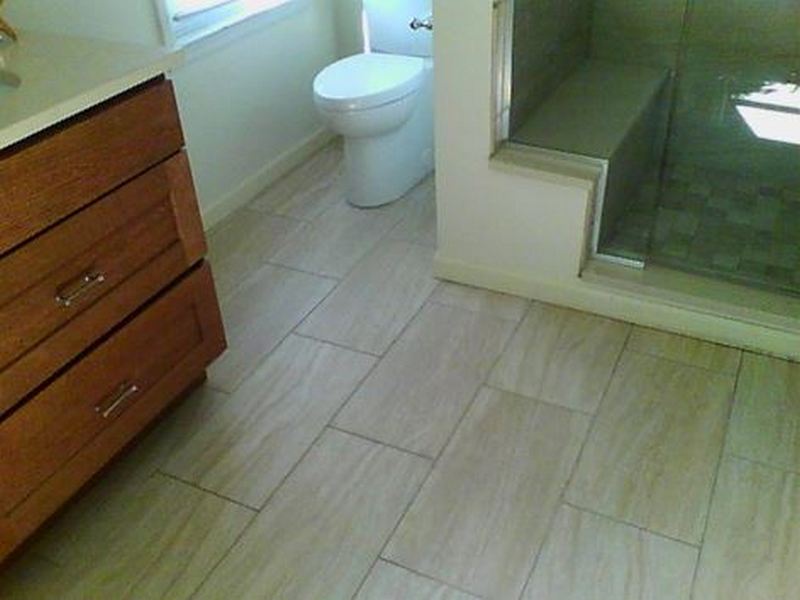
Infrared Photo – Acceptable System:
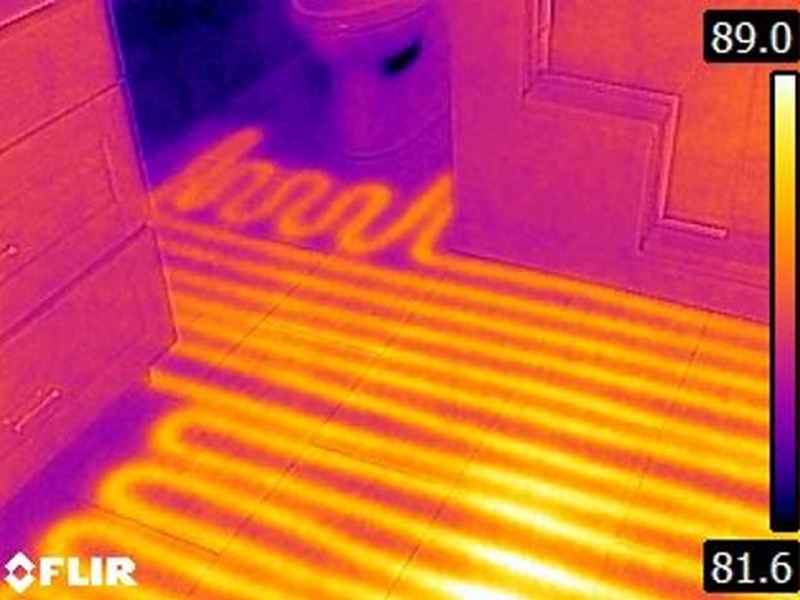
Sections of the radiant heating are inoperative. This affects proper conditioning of the area. Hire an HVAC technician or an electrician to provide repairs as needed.
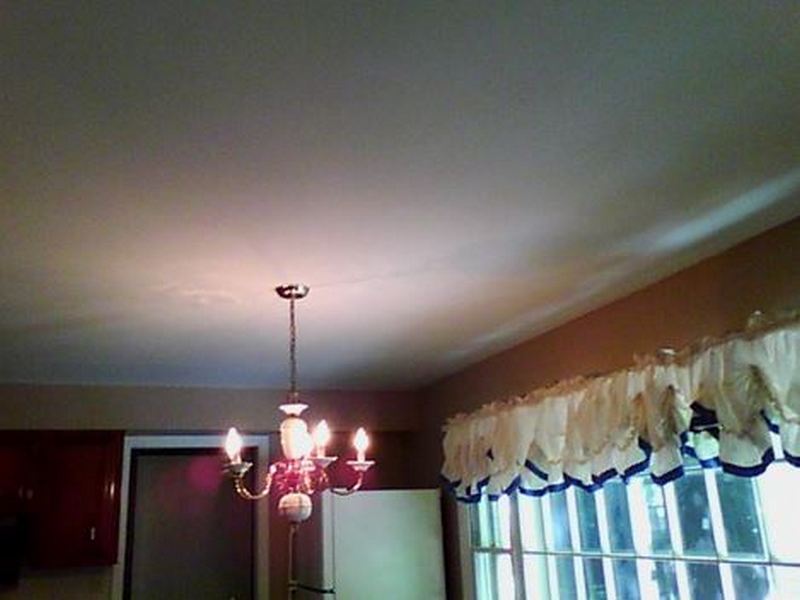
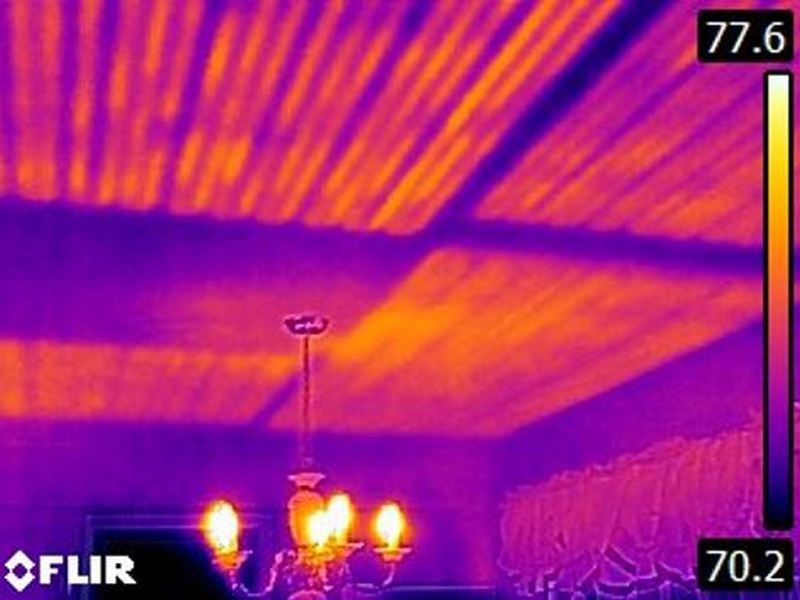
Older, small homes sometimes have a single fossil fuel furnace installed at a central location, either in the floor or a wall. This may have been acceptable as the sole heat source when the dwelling was permitted. However, it won’t meet the requirements in modern Code for heating habitable rooms. Additionally, some of these wall furnaces are unvented, which was not a problem with the high infiltration rates common in homes at that time. Renovations and upgrades that “tighten” a house, e.g. new windows, air sealing measures, will starve the appliance for oxygen and create a dangerous situation.
Inspect the installation, condition, and operation of these furnaces carefully. Floor furnaces collect significant dirt and debris, and should be checked closely from the crawlspace side. Be alert to any signs of backdrafting or deterioration. If there’s any concerns about safety, especially with an unvented unit, a Defect Statement recommending further evaluation should be used. Include an EUL statement as needed.
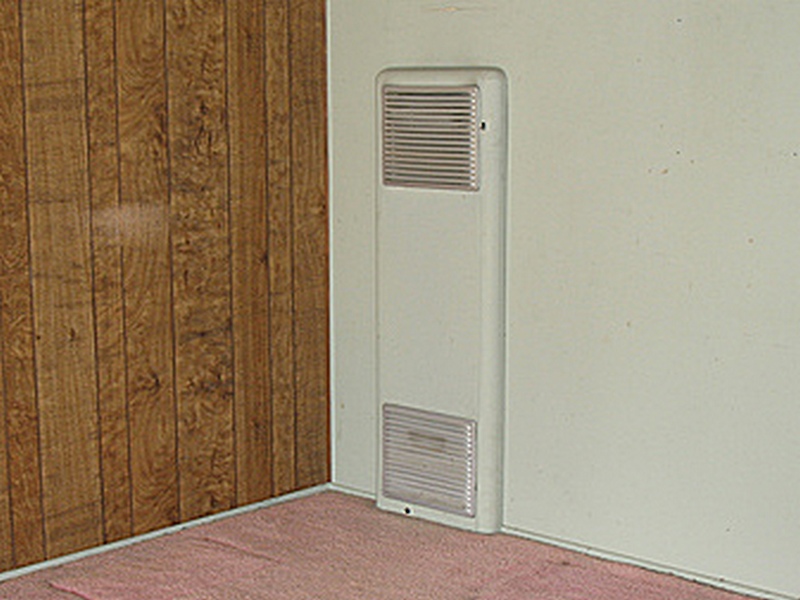
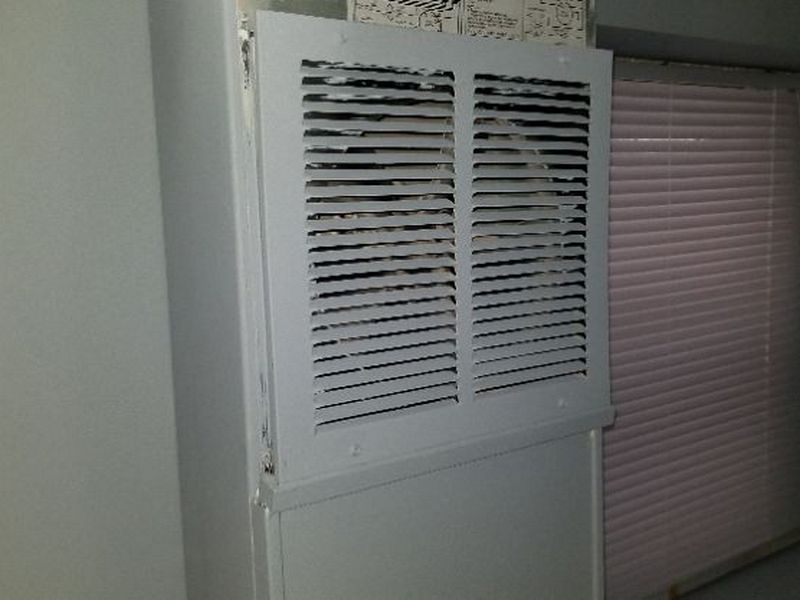
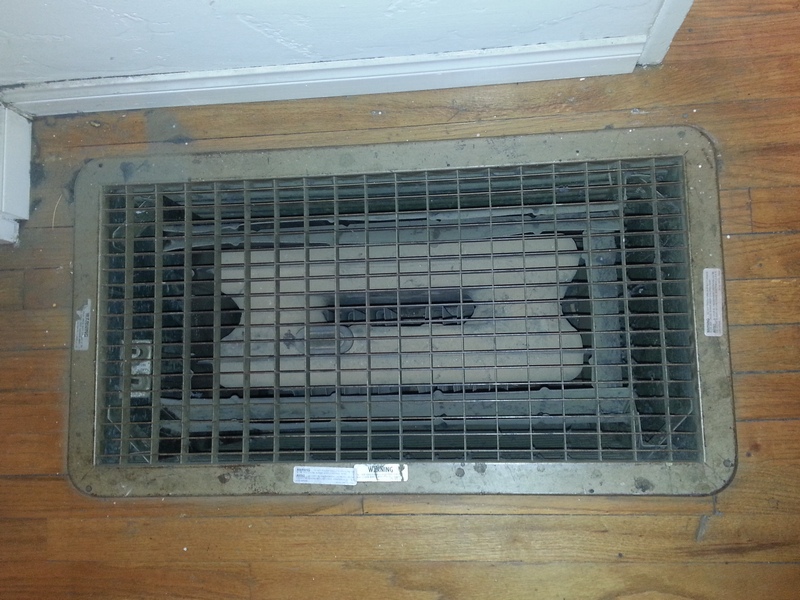
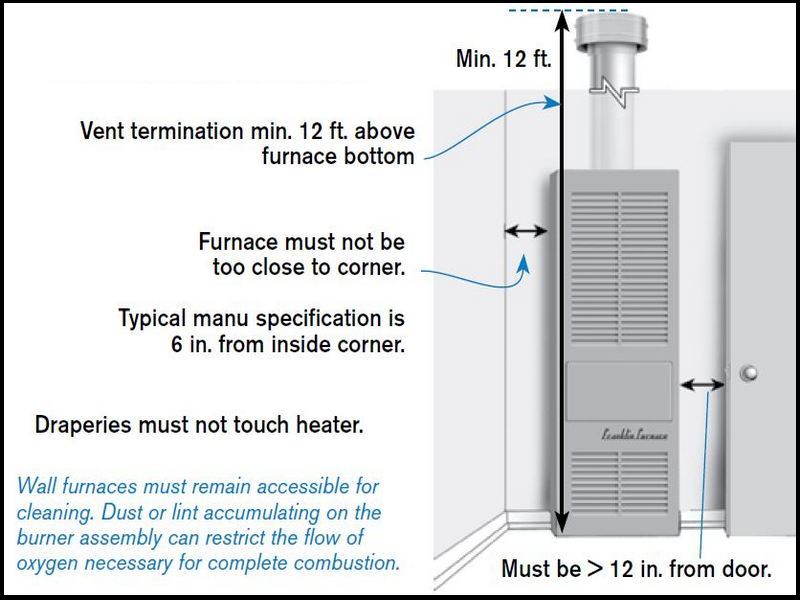
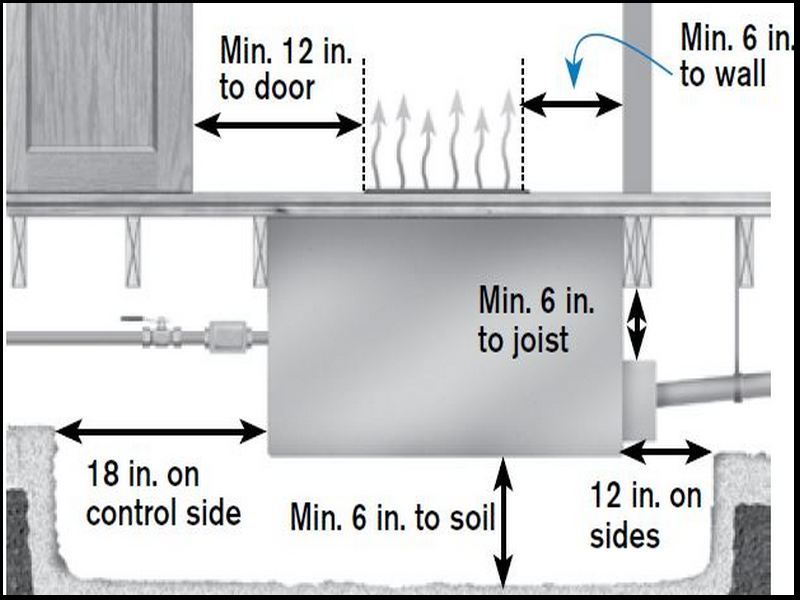
This section includes in-wall electric heaters, with and without fans, as well as permanently-installed gas wall heaters. Electric bathroom heaters have been around for a very long time. As such, they may not comply with modern safety standards, or may be past their EUL. Gas wall heaters are usually unvented, and must be inspected in context with the specific space. Some jurisdictions do not allow unvented appliances in bedrooms. Portable heaters, gas or electric, are outside of the inspection scope and cannot be counted as heat for a habitable space.
Inspect electric wall heaters for function, damage, and any signs of overheating. Use EUL statements when appropriate. Ensure safe clearances from water and flammables, including hanging towels or robes. Unvented gas appliances must have oxygen depletion sensors. These devices cause the pilot flame to lift away from the thermocouple when the available oxygen falls below 20%. That cools the thermocouple, which stops sending its micro-voltage to the gas valve. Without this current, the valve closes and shuts off the flow of gas.
Modern Electric Wall Heater
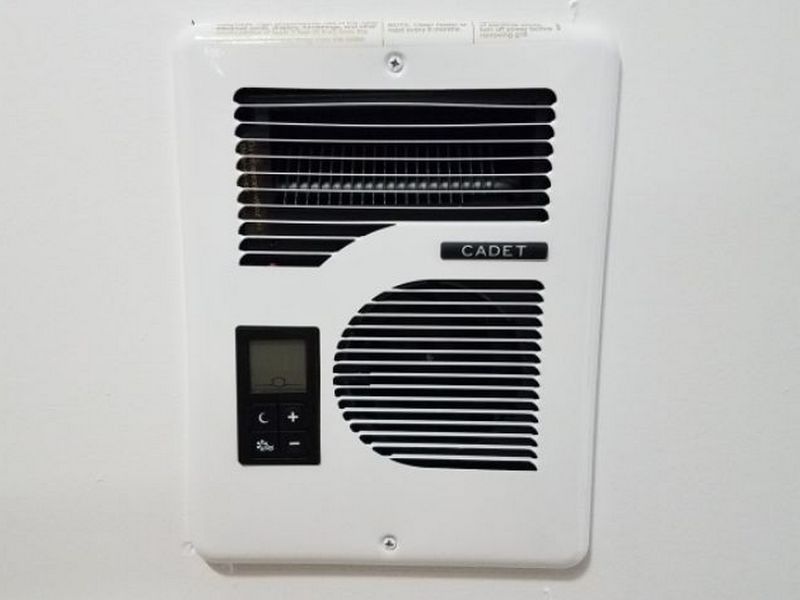
Old Electric Wall Heater >EUL

Gas Wall Heater
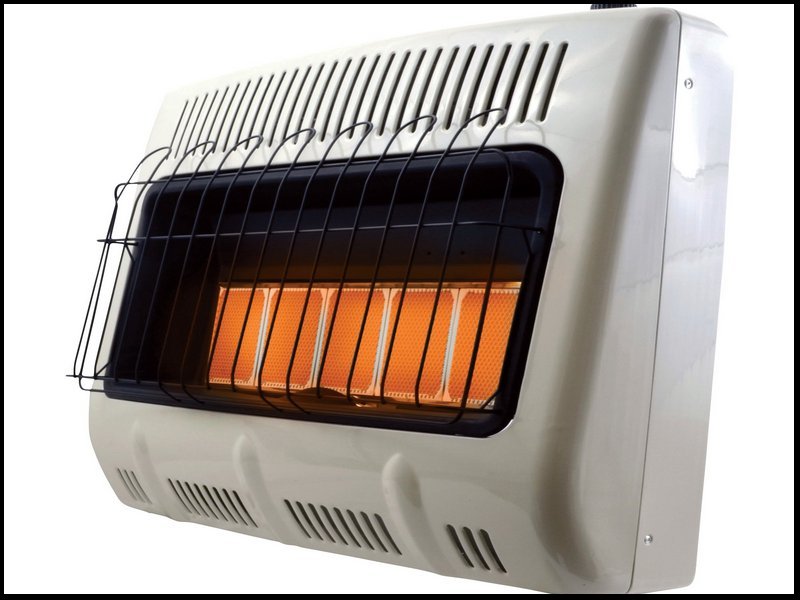
Oxygen Depletion Sensor

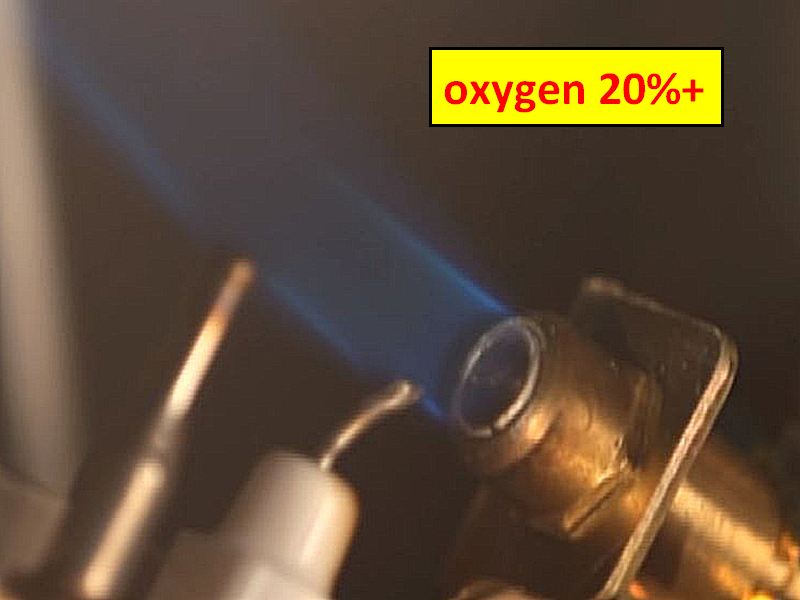
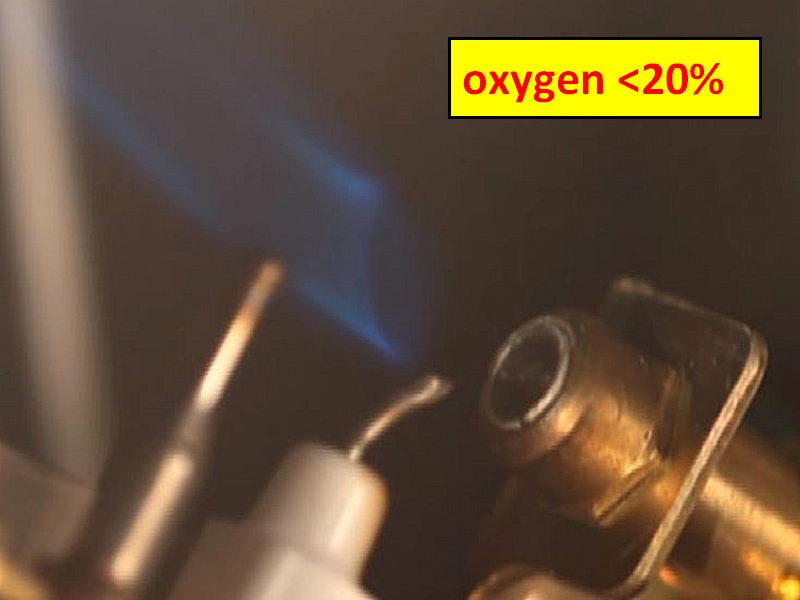
The electric wall heater shows signs of overheating. This is a fire hazard. Hire an electrician to make repairs as needed.
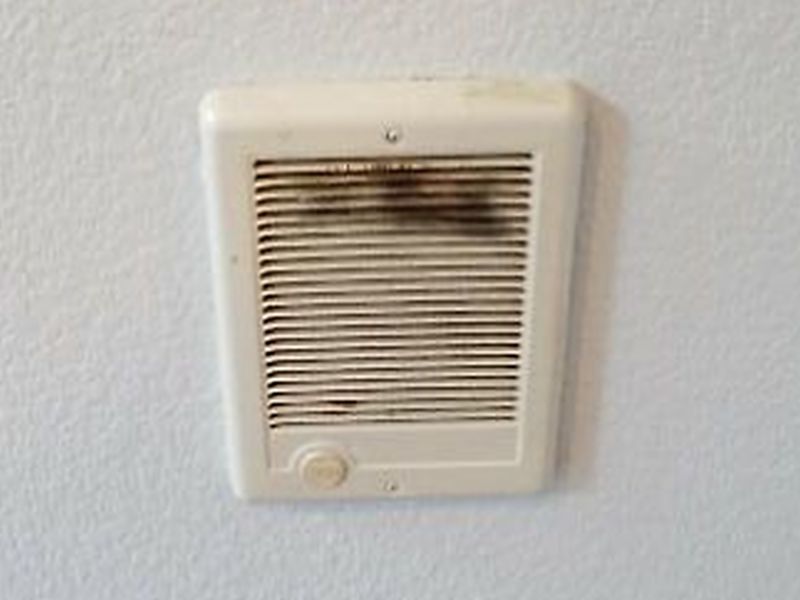
Towel bars and/or robe hooks are installed above the electric wall heater. This is a fire hazard. Relocate the bars or hooks as needed.
